

What Is Creative Writing? (Ultimate Guide + 20 Examples)
Creative writing begins with a blank page and the courage to fill it with the stories only you can tell.
I face this intimidating blank page daily–and I have for the better part of 20+ years.
In this guide, you’ll learn all the ins and outs of creative writing with tons of examples.
What Is Creative Writing (Long Description)?
Creative Writing is the art of using words to express ideas and emotions in imaginative ways. It encompasses various forms including novels, poetry, and plays, focusing on narrative craft, character development, and the use of literary tropes.

Table of Contents
Let’s expand on that definition a bit.
Creative writing is an art form that transcends traditional literature boundaries.
It includes professional, journalistic, academic, and technical writing. This type of writing emphasizes narrative craft, character development, and literary tropes. It also explores poetry and poetics traditions.
In essence, creative writing lets you express ideas and emotions uniquely and imaginatively.
It’s about the freedom to invent worlds, characters, and stories. These creations evoke a spectrum of emotions in readers.
Creative writing covers fiction, poetry, and everything in between.
It allows writers to express inner thoughts and feelings. Often, it reflects human experiences through a fabricated lens.
Types of Creative Writing
There are many types of creative writing that we need to explain.
Some of the most common types:
- Short stories
- Screenplays
- Flash fiction
- Creative Nonfiction
Short Stories (The Brief Escape)
Short stories are like narrative treasures.
They are compact but impactful, telling a full story within a limited word count. These tales often focus on a single character or a crucial moment.
Short stories are known for their brevity.
They deliver emotion and insight in a concise yet powerful package. This format is ideal for exploring diverse genres, themes, and characters. It leaves a lasting impression on readers.
Example: Emma discovers an old photo of her smiling grandmother. It’s a rarity. Through flashbacks, Emma learns about her grandmother’s wartime love story. She comes to understand her grandmother’s resilience and the value of joy.
Novels (The Long Journey)
Novels are extensive explorations of character, plot, and setting.
They span thousands of words, giving writers the space to create entire worlds. Novels can weave complex stories across various themes and timelines.
The length of a novel allows for deep narrative and character development.
Readers get an immersive experience.
Example: Across the Divide tells of two siblings separated in childhood. They grow up in different cultures. Their reunion highlights the strength of family bonds, despite distance and differences.
Poetry (The Soul’s Language)
Poetry expresses ideas and emotions through rhythm, sound, and word beauty.
It distills emotions and thoughts into verses. Poetry often uses metaphors, similes, and figurative language to reach the reader’s heart and mind.
Poetry ranges from structured forms, like sonnets, to free verse.
The latter breaks away from traditional formats for more expressive thought.
Example: Whispers of Dawn is a poem collection capturing morning’s quiet moments. “First Light” personifies dawn as a painter. It brings colors of hope and renewal to the world.
Plays (The Dramatic Dialogue)
Plays are meant for performance. They bring characters and conflicts to life through dialogue and action.
This format uniquely explores human relationships and societal issues.
Playwrights face the challenge of conveying setting, emotion, and plot through dialogue and directions.
Example: Echoes of Tomorrow is set in a dystopian future. Memories can be bought and sold. It follows siblings on a quest to retrieve their stolen memories. They learn the cost of living in a world where the past has a price.
Screenplays (Cinema’s Blueprint)
Screenplays outline narratives for films and TV shows.
They require an understanding of visual storytelling, pacing, and dialogue. Screenplays must fit film production constraints.
Example: The Last Light is a screenplay for a sci-fi film. Humanity’s survivors on a dying Earth seek a new planet. The story focuses on spacecraft Argo’s crew as they face mission challenges and internal dynamics.
Memoirs (The Personal Journey)
Memoirs provide insight into an author’s life, focusing on personal experiences and emotional journeys.
They differ from autobiographies by concentrating on specific themes or events.
Memoirs invite readers into the author’s world.
They share lessons learned and hardships overcome.
Example: Under the Mango Tree is a memoir by Maria Gomez. It shares her childhood memories in rural Colombia. The mango tree in their yard symbolizes home, growth, and nostalgia. Maria reflects on her journey to a new life in America.
Flash Fiction (The Quick Twist)
Flash fiction tells stories in under 1,000 words.
It’s about crafting compelling narratives concisely. Each word in flash fiction must count, often leading to a twist.
This format captures life’s vivid moments, delivering quick, impactful insights.
Example: The Last Message features an astronaut’s final Earth message as her spacecraft drifts away. In 500 words, it explores isolation, hope, and the desire to connect against all odds.
Creative Nonfiction (The Factual Tale)
Creative nonfiction combines factual accuracy with creative storytelling.
This genre covers real events, people, and places with a twist. It uses descriptive language and narrative arcs to make true stories engaging.
Creative nonfiction includes biographies, essays, and travelogues.
Example: Echoes of Everest follows the author’s Mount Everest climb. It mixes factual details with personal reflections and the history of past climbers. The narrative captures the climb’s beauty and challenges, offering an immersive experience.
Fantasy (The World Beyond)
Fantasy transports readers to magical and mythical worlds.
It explores themes like good vs. evil and heroism in unreal settings. Fantasy requires careful world-building to create believable yet fantastic realms.
Example: The Crystal of Azmar tells of a young girl destined to save her world from darkness. She learns she’s the last sorceress in a forgotten lineage. Her journey involves mastering powers, forming alliances, and uncovering ancient kingdom myths.
Science Fiction (The Future Imagined)
Science fiction delves into futuristic and scientific themes.
It questions the impact of advancements on society and individuals.
Science fiction ranges from speculative to hard sci-fi, focusing on plausible futures.
Example: When the Stars Whisper is set in a future where humanity communicates with distant galaxies. It centers on a scientist who finds an alien message. This discovery prompts a deep look at humanity’s universe role and interstellar communication.
Watch this great video that explores the question, “What is creative writing?” and “How to get started?”:
What Are the 5 Cs of Creative Writing?
The 5 Cs of creative writing are fundamental pillars.
They guide writers to produce compelling and impactful work. These principles—Clarity, Coherence, Conciseness, Creativity, and Consistency—help craft stories that engage and entertain.
They also resonate deeply with readers. Let’s explore each of these critical components.
Clarity makes your writing understandable and accessible.
It involves choosing the right words and constructing clear sentences. Your narrative should be easy to follow.
In creative writing, clarity means conveying complex ideas in a digestible and enjoyable way.
Coherence ensures your writing flows logically.
It’s crucial for maintaining the reader’s interest. Characters should develop believably, and plots should progress logically. This makes the narrative feel cohesive.
Conciseness
Conciseness is about expressing ideas succinctly.
It’s being economical with words and avoiding redundancy. This principle helps maintain pace and tension, engaging readers throughout the story.
Creativity is the heart of creative writing.
It allows writers to invent new worlds and create memorable characters. Creativity involves originality and imagination. It’s seeing the world in unique ways and sharing that vision.
Consistency
Consistency maintains a uniform tone, style, and voice.
It means being faithful to the world you’ve created. Characters should act true to their development. This builds trust with readers, making your story immersive and believable.
Is Creative Writing Easy?
Creative writing is both rewarding and challenging.
Crafting stories from your imagination involves more than just words on a page. It requires discipline and a deep understanding of language and narrative structure.
Exploring complex characters and themes is also key.
Refining and revising your work is crucial for developing your voice.
The ease of creative writing varies. Some find the freedom of expression liberating.
Others struggle with writer’s block or plot development challenges. However, practice and feedback make creative writing more fulfilling.
What Does a Creative Writer Do?
A creative writer weaves narratives that entertain, enlighten, and inspire.
Writers explore both the world they create and the emotions they wish to evoke. Their tasks are diverse, involving more than just writing.
Creative writers develop ideas, research, and plan their stories.
They create characters and outline plots with attention to detail. Drafting and revising their work is a significant part of their process. They strive for the 5 Cs of compelling writing.
Writers engage with the literary community, seeking feedback and participating in workshops.
They may navigate the publishing world with agents and editors.
Creative writers are storytellers, craftsmen, and artists. They bring narratives to life, enriching our lives and expanding our imaginations.
How to Get Started With Creative Writing?
Embarking on a creative writing journey can feel like standing at the edge of a vast and mysterious forest.
The path is not always clear, but the adventure is calling.
Here’s how to take your first steps into the world of creative writing:
- Find a time of day when your mind is most alert and creative.
- Create a comfortable writing space free from distractions.
- Use prompts to spark your imagination. They can be as simple as a word, a phrase, or an image.
- Try writing for 15-20 minutes on a prompt without editing yourself. Let the ideas flow freely.
- Reading is fuel for your writing. Explore various genres and styles.
- Pay attention to how your favorite authors construct their sentences, develop characters, and build their worlds.
- Don’t pressure yourself to write a novel right away. Begin with short stories or poems.
- Small projects can help you hone your skills and boost your confidence.
- Look for writing groups in your area or online. These communities offer support, feedback, and motivation.
- Participating in workshops or classes can also provide valuable insights into your writing.
- Understand that your first draft is just the beginning. Revising your work is where the real magic happens.
- Be open to feedback and willing to rework your pieces.
- Carry a notebook or digital recorder to jot down ideas, observations, and snippets of conversations.
- These notes can be gold mines for future writing projects.
Final Thoughts: What Is Creative Writing?
Creative writing is an invitation to explore the unknown, to give voice to the silenced, and to celebrate the human spirit in all its forms.
Check out these creative writing tools (that I highly recommend):
| Recommended Tools | Learn More |
|---|---|
| Jasper AI | |
| Show Not Tell GPT | |
| Dragon Professional Speech Dictation and Voice Recognition | |
| Surface Laptop | |
| Bluehost | |
| Sqribble (eBook maker) |
Read This Next:
- What Is a Prompt in Writing? (Ultimate Guide + 200 Examples)
- What Is A Personal Account In Writing? (47 Examples)
- How To Write A Fantasy Short Story (Ultimate Guide + Examples)
- How To Write A Fantasy Romance Novel [21 Tips + Examples)

What is Creative Writing? A Key Piece of the Writer’s Toolbox
Not all writing is the same and there’s a type of writing that has the ability to transport, teach, and inspire others like no other.
Creative writing stands out due to its unique approach and focus on imagination. Here’s how to get started and grow as you explore the broad and beautiful world of creative writing!
What is Creative Writing?
Creative writing is a form of writing that extends beyond the bounds of regular professional, journalistic, academic, or technical forms of literature. It is characterized by its emphasis on narrative craft, character development, and the use of literary tropes or poetic techniques to express ideas in an original and imaginative way.
Creative writing can take on various forms such as:
- short stories
- screenplays
It’s a way for writers to express their thoughts, feelings, and ideas in a creative, often symbolic, way . It’s about using the power of words to transport readers into a world created by the writer.
5 Key Characteristics of Creative Writing
Creative writing is marked by several defining characteristics, each working to create a distinct form of expression:
1. Imagination and Creativity: Creative writing is all about harnessing your creativity and imagination to create an engaging and compelling piece of work. It allows writers to explore different scenarios, characters, and worlds that may not exist in reality.
2. Emotional Engagement: Creative writing often evokes strong emotions in the reader. It aims to make the reader feel something — whether it’s happiness, sorrow, excitement, or fear.
3. Originality: Creative writing values originality. It’s about presenting familiar things in new ways or exploring ideas that are less conventional.
4. Use of Literary Devices: Creative writing frequently employs literary devices such as metaphors, similes, personification, and others to enrich the text and convey meanings in a more subtle, layered manner.
5. Focus on Aesthetics: The beauty of language and the way words flow together is important in creative writing. The aim is to create a piece that’s not just interesting to read, but also beautiful to hear when read aloud.
Remember, creative writing is not just about producing a work of art. It’s also a means of self-expression and a way to share your perspective with the world. Whether you’re considering it as a hobby or contemplating a career in it, understanding the nature and characteristics of creative writing can help you hone your skills and create more engaging pieces .
For more insights into creative writing, check out our articles on creative writing jobs and what you can do with a creative writing degree and is a degree in creative writing worth it .
Styles of Creative Writing
To fully understand creative writing , you must be aware of the various styles involved. Creative writing explores a multitude of genres, each with its own unique characteristics and techniques.
Poetry is a form of creative writing that uses expressive language to evoke emotions and ideas. Poets often employ rhythm, rhyme, and other poetic devices to create pieces that are deeply personal and impactful. Poems can vary greatly in length, style, and subject matter, making this a versatile and dynamic form of creative writing.
Short Stories
Short stories are another common style of creative writing. These are brief narratives that typically revolve around a single event or idea. Despite their length, short stories can provide a powerful punch, using precise language and tight narrative structures to convey a complete story in a limited space.
Novels represent a longer form of narrative creative writing. They usually involve complex plots, multiple characters, and various themes. Writing a novel requires a significant investment of time and effort; however, the result can be a rich and immersive reading experience.
Screenplays
Screenplays are written works intended for the screen, be it television, film, or online platforms. They require a specific format, incorporating dialogue and visual descriptions to guide the production process. Screenwriters must also consider the practical aspects of filmmaking, making this an intricate and specialized form of creative writing.
If you’re interested in this style, understanding creative writing jobs and what you can do with a creative writing degree can provide useful insights.
Writing for the theater is another specialized form of creative writing. Plays, like screenplays, combine dialogue and action, but they also require an understanding of the unique dynamics of the theatrical stage. Playwrights must think about the live audience and the physical space of the theater when crafting their works.
Each of these styles offers unique opportunities for creativity and expression. Whether you’re drawn to the concise power of poetry, the detailed storytelling of novels, or the visual language of screenplays and plays, there’s a form of creative writing that will suit your artistic voice. The key is to explore, experiment, and find the style that resonates with you.
For those looking to spark their creativity, our article on creative writing prompts offers a wealth of ideas to get you started.
Importance of Creative Writing
Understanding what is creative writing involves recognizing its value and significance. Engaging in creative writing can provide numerous benefits – let’s take a closer look.
Developing Creativity and Imagination
Creative writing serves as a fertile ground for nurturing creativity and imagination. It encourages you to think outside the box, explore different perspectives, and create unique and original content. This leads to improved problem-solving skills and a broader worldview , both of which can be beneficial in various aspects of life.
Through creative writing, one can build entire worlds, create characters, and weave complex narratives, all of which are products of a creative mind and vivid imagination. This can be especially beneficial for those seeking creative writing jobs and what you can do with a creative writing degree .
Enhancing Communication Skills
Creative writing can also play a crucial role in honing communication skills. It demands clarity, precision, and a strong command of language. This helps to improve your vocabulary, grammar, and syntax, making it easier to express thoughts and ideas effectively .
Moreover, creative writing encourages empathy as you often need to portray a variety of characters from different backgrounds and perspectives. This leads to a better understanding of people and improved interpersonal communication skills.
Exploring Emotions and Ideas
One of the most profound aspects of creative writing is its ability to provide a safe space for exploring emotions and ideas. It serves as an outlet for thoughts and feelings , allowing you to express yourself in ways that might not be possible in everyday conversation.
Writing can be therapeutic, helping you process complex emotions, navigate difficult life events, and gain insight into your own experiences and perceptions. It can also be a means of self-discovery , helping you to understand yourself and the world around you better.
So, whether you’re a seasoned writer or just starting out, the benefits of creative writing are vast and varied. For those interested in developing their creative writing skills, check out our articles on creative writing prompts and how to teach creative writing . If you’re considering a career in this field, you might find our article on is a degree in creative writing worth it helpful.
4 Steps to Start Creative Writing
Creative writing can seem daunting to beginners, but with the right approach, anyone can start their journey into this creative field. Here are some steps to help you start creative writing .
1. Finding Inspiration
The first step in creative writing is finding inspiration . Inspiration can come from anywhere and anything. Observe the world around you, listen to conversations, explore different cultures, and delve into various topics of interest.
Reading widely can also be a significant source of inspiration. Read different types of books, articles, and blogs. Discover what resonates with you and sparks your imagination.
For structured creative prompts, visit our list of creative writing prompts to get your creative juices flowing.
Editor’s Note : When something excites or interests you, stop and take note – it could be the inspiration for your next creative writing piece.
2. Planning Your Piece
Once you have an idea, the next step is to plan your piece . Start by outlining:
- the main points
Remember, this can serve as a roadmap to guide your writing process. A plan doesn’t have to be rigid. It’s a flexible guideline that can be adjusted as you delve deeper into your writing. The primary purpose is to provide direction and prevent writer’s block.
3. Writing Your First Draft
After planning your piece, you can start writing your first draft . This is where you give life to your ideas and breathe life into your characters.
Don’t worry about making it perfect in the first go. The first draft is about getting your ideas down on paper . You can always refine and polish your work later. And if you don’t have a great place to write that first draft, consider a journal for writing .
4. Editing and Revising Your Work
The final step in the creative writing process is editing and revising your work . This is where you fine-tune your piece, correct grammatical errors, and improve sentence structure and flow.
Editing is also an opportunity to enhance your storytelling . You can add more descriptive details, develop your characters further, and make sure your plot is engaging and coherent.
Remember, writing is a craft that improves with practice . Don’t be discouraged if your first few pieces don’t meet your expectations. Keep writing, keep learning, and most importantly, enjoy the creative process.
For more insights on creative writing, check out our articles on how to teach creative writing or creative writing activities for kids.
Tips to Improve Creative Writing Skills
Understanding what is creative writing is the first step. But how can one improve their creative writing skills? Here are some tips that can help.
Read Widely
Reading is a vital part of becoming a better writer. By immersing oneself in a variety of genres, styles, and authors, one can gain a richer understanding of language and storytelling techniques . Different authors have unique voices and methods of telling stories, which can serve as inspiration for your own work. So, read widely and frequently!
Practice Regularly
Like any skill, creative writing improves with practice. Consistently writing — whether it be daily, weekly, or monthly — helps develop your writing style and voice . Using creative writing prompts can be a fun way to stimulate your imagination and get the words flowing.
Attend Writing Workshops and Courses
Formal education such as workshops and courses can offer structured learning and expert guidance. These can provide invaluable insights into the world of creative writing, from understanding plot development to character creation. If you’re wondering is a degree in creative writing worth it, these classes can also give you a taste of what studying creative writing at a higher level might look like .
Joining Writing Groups and Communities
Being part of a writing community can provide motivation, constructive feedback, and a sense of camaraderie. These groups often hold regular meetings where members share their work and give each other feedback. Plus, it’s a great way to connect with others who share your passion for writing.
Seeking Feedback on Your Work
Feedback is a crucial part of improving as a writer. It offers a fresh perspective on your work, highlighting areas of strength and opportunities for improvement. Whether it’s from a writing group, a mentor, or even friends and family, constructive criticism can help refine your writing .
Start Creative Writing Today!
Remember, becoming a proficient writer takes time and patience. So, don’t be discouraged by initial challenges. Keep writing, keep learning, and most importantly, keep enjoying the process. Who knows, your passion for creative writing might even lead to creative writing jobs and what you can do with a creative writing degree .
Happy writing!
Brooks Manley

Creative Primer is a resource on all things journaling, creativity, and productivity. We’ll help you produce better ideas, get more done, and live a more effective life.
My name is Brooks. I do a ton of journaling, like to think I’m a creative (jury’s out), and spend a lot of time thinking about productivity. I hope these resources and product recommendations serve you well. Reach out if you ever want to chat or let me know about a journal I need to check out!
Here’s my favorite journal for 2024:

Gratitude Journal Prompts Mindfulness Journal Prompts Journal Prompts for Anxiety Reflective Journal Prompts Healing Journal Prompts Cognitive Behavioral Therapy Journal Prompts Mental Health Journal Prompts ASMR Journal Prompts Manifestation Journal Prompts Self-Care Journal Prompts Morning Journal Prompts Evening Journal Prompts Self-Improvement Journal Prompts Creative Writing Journal Prompts Dream Journal Prompts Relationship Journal Prompts "What If" Journal Prompts New Year Journal Prompts Shadow Work Journal Prompts Journal Prompts for Overcoming Fear Journal Prompts for Dealing with Loss Journal Prompts for Discerning and Decision Making Travel Journal Prompts Fun Journal Prompts
Inspiring Ink: Expert Tips on How to Teach Creative Writing
You may also like, how to journal for anxiety: a guide + 25 journal prompts for anxiety.
250+ Journal Prompts for Every Scenario and Circumstance
How to make an intention journal, leave a reply cancel reply.
Save my name, email, and website in this browser for the next time I comment.
- Productivity
- Favorite Journals
Writers' Treasure
Effective writing advice for aspiring writers
Creative Writing 101
Creative writing is any form of writing which is written with the creativity of mind: fiction writing, poetry writing, creative nonfiction writing and more. The purpose is to express something, whether it be feelings, thoughts, or emotions.
Rather than only giving information or inciting the reader to make an action beneficial to the writer, creative writing is written to entertain or educate someone, to spread awareness about something or someone, or to express one’s thoughts.
There are two kinds of creative writing: good and bad, effective and ineffective. Bad, ineffective creative writing cannot make any impression on the reader. It won’t achieve its purpose.
So whether you’re a novelist, a poet, a short-story writer, an essayist, a biographer or an aspiring beginner, you want to improve your craft. The question is: how?
When you write great fiction, poetry, or nonfiction, amazing things can happen. Readers can’t put it down. The work you wrote becomes a bestseller. It becomes famous. But you have to reach to that level… first .
The best way to increase your proficiency in creative writing is to write, write compulsively, but it doesn’t mean write whatever you want. There are certain things you should know first… it helps to start with the right foot.
To do exactly that, here we have a beginners’ guide from Writers’ Treasure on the subject:
- An Introduction to Creative Writing
- How to Get Started in Creative Writing in Just Three Steps
- Creative Writing vs. Technical Writing
- Fiction Writing 101: The Elements of Stories
- Poetry Writing: Forms and Terms Galore
- Creative Non-Fiction: What is it?
- Tips and Tricks to Improve Your Creative Writing
- Common Mistakes Made by Creative Writers
For novelists: do you want to write compelling opening chapters?
Are you an aspiring novelist? Will your novel see the light of day? For that, you will need to make the first chapter of your story as compelling as possible. Otherwise, readers won’t even pick up your novel. That chapter can be the make-or-break point that decides whether your novel is published or not. It’s because good editors know how you write from the first three pages… or sometimes even from the opening lines.
To solve this problem, I created a five-part tutorial on Writing Compelling Opening Chapters . It outlines why you need to write a compelling opening chapter, my personal favourite way of beginning it, what should be told and shown in it, general dos and don’ts, and what you need to do after having written it. Check it out for more.
Need more writing tips?
Sometimes you reach that stage when you outgrow the beginner stage of writing but feel that you’re not yet an expert. If I just described you, no worries– Writers’ Treasure’s writing tips are here. Whether you want to make your writing more readable, more irresistible, more professional, we’ve got you covered. So check out our writing tips , and be on your way to fast track your success.
I offer writing, editing and proofreading , as well as website creation services. I’ve been in this field for seven years, and I know the tools of the trade. I’ve seen the directions where the writing industry is going, the changes, the new platforms. Get your work done through me, and get fast and efficient service. Get a quote .
Free updates
Get free updates from Writers’ Treasure and learn more tips and tricks to improve your writing.
Share this:
52 thoughts on “creative writing 101”.
- Pingback: Creative Non-Fiction: What is it? | Writers Treasure
- Pingback: Poetry Writing Forms and Terms | Writers Treasure
- Pingback: Fiction Writing Tips and Elements to focus on | Writers Treasure
- Pingback: Creative Writing vs. Technical Writing | Writers Treasure
- Pingback: How to Get Started in Creative Writing | Writers Treasure
- Pingback: An Introduction to Creative Writing | Writers Treasure
- Pingback: How to Improve Your Creative Writing | Writers Treasure
- Pingback: Common Mistakes Made by Creative Writers | Writers Treasure
- Pingback: To Outline or Not to Outline, That is the Question
- Pingback: How to Create Effective Scenes and Chapters in Your Novel : Writing Forward
- Pingback: Writing Powerful True Short Stories
- Pingback: POV: What it is and how it matters
- Pingback: Creative Writing Skills: Do You Have Them All?
- Pingback: Three great articles check out on the Writers Treasure - Jamie Folsom
- Pingback: Warning: Do You Know that Your Paragraphs are Not Good Enough?
- Pingback: Welcome to Writers Treasure
- Pingback: How to Create Effective Scenes and Chapters in Your Novel
- Pingback: Adding Humour to Creative Write-up: Tips and Tricks
- Pingback: Creative Writing vs. Resume Writing | Resume Matrix
- Pingback: How to Get Started in Creative Writing in Just Three Steps | Blog do Learning
- Pingback: The #1 writing advice: write the truth
- Pingback: Creative writing in 2015: here’s what you need to know
- Pingback: Creative Writing Can Be Practical Writing - Simple Writer
- Pingback: Freedom Friday: Liberating Your Creativity | Renee "Soul Writer" Brooks
- Pingback: Tips to help you become a good copywriter | The Creative Copywriter.
- Pingback: Creative Writing | Shahad Almarzooq
- Pingback: How to be good at creative writing?
- Pingback: Learn creative writing
- Pingback: Creative Writing - Occident Books
- Pingback: How to become an outstanding writer
- Pingback: 5 creative writing tips to help you write great essays! – Essay Writing Tips and Help
- Pingback: Creative Writing Tips | learningland2016
- Pingback: NELTA ELT Forum
- Pingback: Language, Communication and Creativity. – lookinglanguage
- Pingback: Keep Your Kids Learning Even When School Year Is Over | Severna Park Children's Centre, Inc
- Pingback: 10 Free Online Courses on Creative Writing » A guide to free online courses
- Pingback: How to start a successful Blog – Beginner’s Guide for 2016
- Pingback: How to start a successful Blog – Beginner’s Guide for 2017
- Pingback: Best of English classes | Site Title
- Pingback: English Classes,Which Classes Dominate others? – Pressing Times
- Pingback: Creative Writing 101 | Junctionway
- Pingback: How to Write Quality Articles: A New Guide for Online Startups [Part Two: 3 Simple Ways for Finding Ideas] - Suhaib Mohammed
- Pingback: Writing Blogs in the Shower - Say It For You- Say It For You
- Pingback: 5 Ways To Improve Your Health First In The New Year - Sarah Scoop
- Pingback: 10 Hobbies Your Teen Can Get as an Alternative to Digital Devices While on Lockdown | meekscutoff.com
- Pingback: 50+ Easy Fiverr Freelance Jobs Examples to Start Today! | IsuaWealthyPlace
- Pingback: 10 Creative Writing Strategies In The Composition Classroom - Wizpals
- Pingback: 5 Ways to Become the MacGyver of Creative Writing
- Pingback: Balancing Your Life As A Writer And Head Of The Family - ebookomatic.com
- Pingback: EbookoMatic | Ricos Electronic World
- Pingback: 20 Types of Freelance Writing Careers (The Definitive List)
- Pingback: Welcome to Musings & Meanderings: A Journey Through Poetry and Prose - Musings & Meanderings
Comments are closed.
TRY OUR FREE APP
Write your book in Reedsy Studio. Try the beloved writing app for free today.
Craft your masterpiece in Reedsy Studio
Plan, write, edit, and format your book in our free app made for authors.

Guides • Perfecting your Craft
Last updated on Dec 23, 2022
Creative Writing: 8 Fun Ways to Get Started
About the author.
Reedsy's editorial team is a diverse group of industry experts devoted to helping authors write and publish beautiful books.
About Savannah Cordova
Savannah is a senior editor with Reedsy and a published writer whose work has appeared on Slate, Kirkus, and BookTrib. Her short fiction has appeared in the Owl Canyon Press anthology, "No Bars and a Dead Battery".
Creative writing is a written art form that uses the imagination to tell stories and compose essays, poetry, screenplays, novels, lyrics, and more. It can be defined in opposition to the dry and factual types of writing found in academic, technical, or journalistic texts.
Characterized by its ability to evoke emotion and engage readers, creative writing can tackle themes and ideas that one might struggle to discuss in cold, factual terms.
If you’re interested in the world of creative writing, we have eight fantastic exercises and activities to get you started.

1. Use writing prompts every week

Coming up with ideas for short stories can be challenging, which is why we created a directory of 1700+ creative writing prompts covering a wide range of genres and topics. Writing prompts are flexible in nature, they are meant to inspire you without being too constrictive. Overall, they are a great way to keep your creative muscles limber.

If you’re struggling for motivation, how does a hard deadline and a little prize money sound? Prompts-based writing contests are a fantastic way to dive into creative writing: the combination of due dates, friendly rivalries, prize money, and the potential to have your work published is often just what’s needed to propel you over the finish line.
We run a weekly writing contest over on Reedsy Prompts , where hundreds of writers from all around the world challenge themselves weekly to write a short story between 1,000 and 3,000 words for a chance to win the $250 prize. Furthermore, the community is very active in providing constructive feedback, support, and accountability to each other 一 something that will make your efforts even more worthwhile.
Take a peek at our directory of writing contests which features some of the most prestigious open writing competitions in the world.
2. Start journaling your days

Another easy way to get started with creative writing is to keep a journal. We’re not talking about an hour-by-hour account of your day, but journaling as a way to express yourself without filters and find your ‘voice in writing’. If you’re unsure what to journal about, think of any daily experiences that have had an impact on you, such as…
Special moments . Did you lock yourself out of your house? Or did you catch a beautiful sunset on your way back from groceries? Capture those moments, and how you felt about them.
People . Did you have an unusual exchange with a stranger at the bar? Or did you reconnect with someone you haven’t seen in years? Share your thoughts about it.
World events . Is there something happening in the world right now that is triggering you? That’s understandable. You can reflect on it (and let some steam off) while journaling.
Memories . Did you go down memory lane after a glass of wine? Great, honor those memories by trying to recollect them in detail on paper so that they will always stay vivid in your mind.
Life decisions . Are you having an existential crisis about what to do with your life? Write down your thought process, and the pros and cons of the possible decisions in front of you. You’ll be surprised to discover that, not only is it a great creative writing exercise, but it can also actually help you sort your life out!
If you struggle to write consistently, sign up for our How to Write a Novel course to finish a novel in just 3 months.

NEW REEDSY COURSE
How to Write a Novel
Enroll in our course and become an author in three months.
3. Create an anonymous social media account

Like anonymous blogging, an incognito Twitter account sidesteps the pressure that comes with attaching your name to your work. Anonymously putting tiny stories out into the ether gives you the freedom to create without worrying about the consequences — which is great, so long as you don’t use it as an opportunity to troll people or spread conspiracy theories.
You could use the anonymous account in different ways. For example, you could…
- Tweet from unique perspectives (e.g. a dog observing human behavior );
- Create a parody account of real or fictional people (e.g. an English poet from the Middle Ages );
- Challenge yourself to write tiny flash fiction stories that fit into Twitter threads.
Just remember, you’re not doing this to fool anyone into thinking that your account is real: be a good citizen and mark yourself a fiction account in your bio.

But if you’re not really a social media kinda person, you may enjoy our next tip, which is a bit more on the analog side.

GET ACCOUNTABILITY
Meet writing coaches on Reedsy
Industry insiders can help you hone your craft, finish your draft, and get published.
4. Find an old photo and tell its story

Find a random old photo — maybe on the web, maybe from a photo album in a yard sale — and see what catches your attention. Look closely at it and try to imagine the story behind it. What was happening? Who are the people in it and how are they really feeling? Do they share a relationship, and of what kind? What are their goals and dreams?
In other words, bring the photo to life with your imagination. Don't be afraid to take artistic license with your story, as the goal is to be creative and have fun while writing.
How do you know it’s creative writing?

5. Create a character from a random name

Just as our universe started from a few simple elements, you can create a character from a few basic information, like their name, culture, and gender. Reedsy’s handy character name generator can help you with that, offering random names based on archetypes, Medieval roots, fantasy traits and more. A few examples? A Celtic heroine named Fíona O'Keefe, a hero’s sidekick named Aderine, or a Korean track star named Park Kang-Dae.
Once you've chosen their name, begin to develop their personality. Set a timer for 5–10 minutes and write anything that comes to mind about them. It could be a page from their FBI dossier, a childhood diary entry, or simply a scene about them boiling an egg.
Just ‘go with the flow’ and don’t stop writing until your time is up. Repeat the process a few times to further hone the personality. If you like what you end up with, you can always go deeper later by creating a character bible .
If a stream-of-consciousness exercise is not your thing, you can try to imagine your character in a specific situation and write down how’d they respond to it. For example, what if they were betrayed by a friend? Or if they were elected in power? To help you imagine situations to put your character in, we made a free template that you can download below.

FREE RESOURCE
Reedsy’s Character Questionnaire
40 questions to help you develop memorable characters.
6. Construct a character by people-watching

People watching is “the action of spending time idly observing people in a public place.” In a non-creepy way, ideally. Sit on a bench on a public square or on a road-side table at your favorite café, and start observing the people around you. Pay attention to any interesting quirks or behaviors, and write it down. Then put on your detective’s hat and try to figure out what that tells you about them.
For example, the man at the table next to you at the restaurant is reading the newspaper. His jacket and hat are neatly arranged next to him. The pages make a whipping sound as he briskly turns them, and he grimaces every time he reads a new article. Try to imagine what he’s reading, and why he’s reacting the way he is. Then, try to build a character with the information you have. It’s a fun creative exercise that will also, hopefully, help you better empathize with strangers.
7. “Map” something you feel strongly about into a new context

Placing your feelings into new contexts can be a powerful creative writing exercise. The idea is to start from something you feel strongly about, and frame it into a completely different context.
For example, suppose your heart is torn apart after you divorce your life-long partner: instead of journaling or crafting an entire novel about it, you could tell a story about a legendary trapeze duo whose partnership has come to an end. If you’re struggling with politicking and petty power dynamics at the office: what if you “mapped” your feelings onto an ant who resents being part of a colony? Directing your frustration at a queen ant can be a fun and cathartic writing experience (that won’t get you in trouble if your co-workers end up reading your story).
8. Capture the moment with a haiku

Haikus are poems from the Japanese tradition that aim to capture, in a few words, daily moments of insight (usually inspired by nature). In a nutshell, it’s about becoming mindful of your surroundings, and notice if you can see something in a new or deeper way 一 then use contrasting imagery to express whatever you noticed.
Here’s an example:
Bright orange bicycle
Speeding through the autumn leaves
A burst of color waves
It may sound a bit complicated, but it shouldn’t be 一 at least not for the purpose of this exercise. Learn the basics of haiku-writing , then challenge yourself to write one per day for a week or month. At the end, you’ll be able to look back at your collection of poems and 一 in the worst case scenario 一 revisit small but significant moments that you would have otherwise forgot about.
Creative writing can be any writing you put your heart and soul into. It could be made for the purpose of expressing your feelings, exploring an idea, or simply entertaining your readers. As you can see there’s many paths to get involved with it, and hundreds of exercises you can use as a starting point. In the next post , we’ll look more in detail at some creative writing examples from some fellow authors.
Join a community of over 1 million authors
Reedsy is more than just a blog. Become a member today to discover how we can help you publish a beautiful book.
Bring your stories to life
Our free writing app lets you set writing goals and track your progress, so you can finally write that book!

1 million authors trust the professionals on Reedsy. Come meet them.
Enter your email or get started with a social account:

Elements of Creative Writing
(3 reviews)
J.D. Schraffenberger, University of Northern Iowa
Rachel Morgan, University of Northern Iowa
Grant Tracey, University of Northern Iowa
Copyright Year: 2023
ISBN 13: 9780915996179
Publisher: University of Northern Iowa
Language: English
Formats Available
Conditions of use.
Learn more about reviews.
Reviewed by Colin Rafferty, Professor, University of Mary Washington on 8/2/24
Fantastically thorough. By using three different authors, one for each genre of creative writing, the textbook allows for a wider diversity of thought and theory on writing as a whole, while still providing a solid grounding in the basics of each... read more
Comprehensiveness rating: 5 see less
Fantastically thorough. By using three different authors, one for each genre of creative writing, the textbook allows for a wider diversity of thought and theory on writing as a whole, while still providing a solid grounding in the basics of each genre. The included links to referred texts also builds in an automatic, OER-based anthology for students. Terms are not only defined clearly, but also their utility is explained--here's what assonance can actually do in a poem, rather than simply "it's repeated vowel sounds,"
Content Accuracy rating: 5
Calling the content "accurate" requires a suspension of the notion that art and writing aren't subjective; instead, it might be more useful to judge the content on the potential usefulness to students, in which case it' s quite accurate. Reading this, I often found myself nodding in agreement with the authors' suggestions for considering published work and discussing workshop material, and their prompts for generating creative writing feel full of potential. It's as error-free, if not more so, than most OER textbooks (which is to say: a few typos here and there) and a surprising number of trade publications. It's not unbiased, per se--after all, these are literary magazine editors writing the textbook and often explaining what it is about a given piece of writing that they find (or do not find) engaging and admirable--but unbiased isn't necessarily a quantity one looks for in creative writing textbooks.
Relevance/Longevity rating: 4
The thing about creative writing is that they keep making more of it, so eventually the anthology elements of this textbook will be less "look what's getting published these days" and more "look what was getting published back then," but the structure of the textbook should allow for substitution and replacement (that said, if UNI pulls funding for NAR, as too many universities are doing these days, then the bigger concern is about the archive vanishing). The more rhetorical elements of the textbook are solid, and should be useful to students and faculty for a long time.
Clarity rating: 5
Very clear, straightforward prose, and perhaps more importantly, there's a sense of each author that emerges in each section, demonstrating to students that writing, especially creative writing, comes from a person. As noted above, any technical jargon is not only explained, but also discussed, meaning that how and why one might use any particular literary technique are emphasized over simply rote memorization of terms.
Consistency rating: 4
It's consistent within each section, but the voice and approach change with each genre. This is a strength, not a weakness, and allows the textbook to avoid the one-size-fits-all approach of single-author creative writing textbooks. There are different "try this" exercises for each genre that strike me as calibrated to impress the facets of that particular genre on the student.
Modularity rating: 5
The three-part structure of the book allows teachers to start wherever they like, genre-wise. While the internal structure of each section does build upon and refer back to earlier chapters, that seems more like an advantage than a disadvantage. Honestly, there's probably enough flexibility built into the textbook that even the callbacks could be glossed over quickly enough in the classroom.
Organization/Structure/Flow rating: 5
Chapters within each genre section build upon each other, starting with basics and developing the complexity and different elements of that genre. The textbook's overall organization allows some flexibility in terms of starting with fiction, poetry, or nonfiction.
Interface rating: 4
Easy to navigate. I particularly like the way that links for the anthology work in the nonfiction section (clearly appearing at the side of the text in addition to within it) and would like to see that consistently applied throughout.
Grammatical Errors rating: 5
A few typos here and there, but you know what else generally has a few typos here and there? Expensive physical textbooks.
Cultural Relevance rating: 5
The anthology covers a diverse array of authors and cultural identities, and the textbook authors are not only conscious of their importance but also discuss how those identities affect decisions that the authors might have made, even on a formal level. If you find an underrepresented group missing, it should be easy enough to supplement this textbook with a poem/essay/story.
Very excited to use this in my Intro to CW classes--unlike other OERs that I've used for the field, this one feels like it could compete with the physical textbooks head-to-head. Other textbooks have felt more like a trade-off between content and cost.
Reviewed by Jeanne Cosmos, Adjunct Faculty, Massachusetts Bay Community College on 7/7/24
Direct language and concrete examples & Case Studies. read more
Direct language and concrete examples & Case Studies.
References to literature and writers- on track.
Relevance/Longevity rating: 5
On point for support to assist writers and creative process.
Direct language and easy to read.
First person to third person. Too informal in many areas of the text.
Units are readily accessible.
Process of creative writing and prompts- scaffold areas of learning for students.
Interface rating: 5
No issues found.
The book is accurate in this regard.
Cultural Relevance rating: 4
Always could be revised and better.
Yes. Textbook font is not academic and spacing - also not academic. A bit too primary. Suggest- Times New Roman 12- point font & a space plus - Some of the language and examples too informal and the tone of lst person would be more effective if - direct and not so 'chummy' as author references his personal recollections. Not effective.
Reviewed by Robert Moreira, Lecturer III, University of Texas Rio Grande Valley on 3/21/24
Unlike Starkey's CREATIVE WRITING: FOUR GENRES IN BRIEF, this textbook does not include a section on drama. read more
Comprehensiveness rating: 4 see less
Unlike Starkey's CREATIVE WRITING: FOUR GENRES IN BRIEF, this textbook does not include a section on drama.
As far as I can tell, content is accurate, error free and unbiased.
The book is relevant and up-to-date.
The text is clear and easy to understand.
Consistency rating: 5
I would agree that the text is consistent in terms of terminology and framework.
Text is modular, yes, but I would like to see the addition of a section on dramatic writing.
Topics are presented in logical, clear fashion.
Navigation is good.
No grammatical issues that I could see.
Cultural Relevance rating: 3
I'd like to see more diverse creative writing examples.
As I stated above, textbook is good except that it does not include a section on dramatic writing.
Table of Contents
- Introduction
- Chapter One: One Great Way to Write a Short Story
- Chapter Two: Plotting
- Chapter Three: Counterpointed Plotting
- Chapter Four: Show and Tell
- Chapter Five: Characterization and Method Writing
- Chapter Six: Character and Dialouge
- Chapter Seven: Setting, Stillness, and Voice
- Chapter Eight: Point of View
- Chapter Nine: Learning the Unwritten Rules
- Chapter One: A Poetry State of Mind
- Chapter Two: The Architecture of a Poem
- Chapter Three: Sound
- Chapter Four: Inspiration and Risk
- Chapter Five: Endings and Beginnings
- Chapter Six: Figurative Language
- Chapter Seven: Forms, Forms, Forms
- Chapter Eight: Go to the Image
- Chapter Nine: The Difficult Simplicity of Short Poems and Killing Darlings
Creative Nonfiction
- Chapter One: Creative Nonfiction and the Essay
- Chapter Two: Truth and Memory, Truth in Memory
- Chapter Three: Research and History
- Chapter Four: Writing Environments
- Chapter Five: Notes on Style
- Chapter Seven: Imagery and the Senses
- Chapter Eight: Writing the Body
- Chapter Nine: Forms
Back Matter
- Contributors
- North American Review Staff
Ancillary Material
- University of Northern Iowa
About the Book
This free and open access textbook introduces new writers to some basic elements of the craft of creative writing in the genres of fiction, poetry, and creative nonfiction. The authors—Rachel Morgan, Jeremy Schraffenberger, and Grant Tracey—are editors of the North American Review, the oldest and one of the most well-regarded literary magazines in the United States. They’ve selected nearly all of the readings and examples (more than 60) from writing that has appeared in NAR pages over the years. Because they had a hand in publishing these pieces originally, their perspective as editors permeates this book. As such, they hope that even seasoned writers might gain insight into the aesthetics of the magazine as they analyze and discuss some reasons this work is so remarkable—and therefore teachable. This project was supported by NAR staff and funded via the UNI Textbook Equity Mini-Grant Program.
About the Contributors
J.D. Schraffenberger is a professor of English at the University of Northern Iowa. He is the author of two books of poems, Saint Joe's Passion and The Waxen Poor , and co-author with Martín Espada and Lauren Schmidt of The Necessary Poetics of Atheism . His other work has appeared in Best of Brevity , Best Creative Nonfiction , Notre Dame Review , Poetry East , Prairie Schooner , and elsewhere.
Rachel Morgan is an instructor of English at the University of Northern Iowa. She is the author of the chapbook Honey & Blood , Blood & Honey . Her work is included in the anthology Fracture: Essays, Poems, and Stories on Fracking in American and has appeared in the Journal of American Medical Association , Boulevard , Prairie Schooner , and elsewhere.
Grant Tracey author of three novels in the Hayden Fuller Mysteries ; the chapbook Winsome featuring cab driver Eddie Sands; and the story collection Final Stanzas , is fiction editor of the North American Review and an English professor at the University of Northern Iowa, where he teaches film, modern drama, and creative writing. Nominated four times for a Pushcart Prize, he has published nearly fifty short stories and three previous collections. He has acted in over forty community theater productions and has published critical work on Samuel Fuller and James Cagney. He lives in Cedar Falls, Iowa.
Contribute to this Page
Save £500 when you enrol by 30th September!
- What Is Creative Writing? The ULTIMATE Guide!

At Oxford Royale Academy, we offer a range of summer school programmes that have become extremely popular amongst students of all ages. The subject of creative writing continues to intrigue many academics as it can help to develop a range of skills that will benefit you throughout your career and life.
Nevertheless, that initial question is one that continues to linger and be asked time and time again: what is creative writing? More specifically, what does it mean or encompass? How does creative writing differ from other styles of writing?
During our Oxford Summer School programme , we will provide you with in-depth an immersive educational experience on campus in the colleges of the best university in the world. However, in this guide, we want to provide a detailed analysis of everything to do with creative writing, helping you understand more about what it is and why it could benefit you to become a creative writer.
The best place to start is with a definition.
What is creative writing?
The dictionary definition of creative writing is that it is original writing that expresses ideas and thoughts in an imaginative way. [1] Some academics will also define it as the art of making things up, but both of these definitions are too simplistic in the grand scheme of things.
It’s challenging to settle on a concrete definition as creative writing can relate to so many different things and formats. Naturally, as the name suggests, it is all built around the idea of being creative or imaginative. It’s to do with using your brain and your own thoughts to create writing that goes outside the realms of what’s expected. This type of writing tends to be more unique as it comes from a personal place. Each individual has their own level of creativity, combined with their own thoughts and views on different things. Therefore, you can conjure up your own text and stories that could be completely different from others.
Understanding creative writing can be challenging when viewed on its own. Consequently, the best way to truly understand this medium is by exploring the other main forms of writing. From here, we can compare and contrast them with the art of creative writing, making it easier to find a definition or separate this form of writing from others.
What are the main forms of writing?
In modern society, we can identify five main types of writing styles [1] that will be used throughout daily life and a plethora of careers:
- Narrative Writing
- Descriptive Writing
- Persuasive Writing
- Expository Writing
- Creative Writing
Narrative writing refers to storytelling in its most basic form. Traditionally, this involves telling a story about a character and walking the readers through the journey they go on. It can be a long novel or a short story that’s only a few hundred words long. There are no rules on length, and it can be completely true or a work of fiction.
A fundamental aspect of narrative writing that makes it different from other forms is that it should includes the key elements of storytelling. As per UX Planet, there are seven core elements of a good story or narrative [2] : the plot, characters, theme, dialogue, melody, decor and spectacle. Narrative writing will include all of these elements to take the ready on a journey that starts at the beginning, has a middle point, but always comes to a conclusion. This style of writing is typically used when writing stories, presenting anecdotes about your life, creating presentations or speeches and for some academic essays.
Descriptive writing, on the other hand, is more focused on the details. When this type of writing is used, it’s focused on capturing the reader’s attention and making them feel like they are part of the story. You want them to live and feel every element of a scene, so they can close their eyes and be whisked away to whatever place or setting you describe.
In many ways, descriptive writing is writing as an art form. Good writers can be given a blank canvas, using their words to paint a picture for the audience. There’s a firm focus on the five senses all humans have; sight, smell, touch, sound and taste. Descriptive writing touches on all of these senses to tell the reader everything they need to know and imagine about a particular scene.
This is also a style of writing that makes good use of both similes and metaphors. A simile is used to describe something as something else, while a metaphor is used to show that something is something else. There’s a subtle difference between the two, but they both aid descriptive writing immensely. According to many writing experts, similes and metaphors allow an author to emphasise, exaggerate, and add interest to a story to create a more vivid picture for the reader [3] .
Looking at persuasive writing and we have a form of writing that’s all about making yourself heard. You have an opinion that you want to get across to the reader, convincing them of it. The key is to persuade others to think differently, often helping them broaden their mind or see things from another point of view. This is often confused with something called opinionative writing, which is all about providing your opinions. While the two seem similar, the key difference is that persuasive writing is built around the idea of submitting evidence and backing your thoughts up. It’s not as simple as stating your opinion for other to read; no, you want to persuade them that your thoughts are worth listening to and perhaps worth acting on.
This style of writing is commonly used journalistically in news articles and other pieces designed to shine a light on certain issues or opinions. It is also typically backed up with statistical evidence to give more weight to your opinions and can be a very technical form of writing that’s not overly emotional.
Expository writing is more focused on teaching readers new things. If we look at its name, we can take the word exposure from it. According to Merriam-Webster [4] , one of the many definitions of exposure is to reveal something to others or present them with something they otherwise didn’t know. In terms of writing, it can refer to the act of revealing new information to others or exposing them to new ideas.
Effectively, expository writing focuses on the goal of leaving the reader with new knowledge of a certain topic or subject. Again, it is predominately seen in journalistic formats, such as explainer articles or ‘how-to’ blogs. Furthermore, you also come across it in academic textbooks or business writing.
This brings us back to the centre of attention for this guide: what is creative writing?
Interestingly, creative writing is often seen as the style of writing that combines many of these forms together in one go. Narrative writing can be seen as creative writing as you are coming up with a story to keep readers engaged, telling a tale for them to enjoy or learn from. Descriptive writing is very much a key part of creative writing as you are using your imagination and creative skills to come up with detailed descriptions that transport the reader out of their home and into a different place.
Creative writing can even use persuasive writing styles in some formats. Many writers will combine persuasive writing with a narrative structure to come up with a creative way of telling a story to educate readers and provide new opinions for them to view or be convinced of. Expository writing can also be involved here, using creativity and your imagination to answer questions or provide advice to the reader.
Essentially, creative writing can combine other writing types to create a unique and new way of telling a story or producing content. At the same time, it can include absolutely none of the other forms at all. The whole purpose of creative writing is to think outside the box and stray from traditional structures and norms. Fundamentally, we can say there are no real rules when it comes to creative writing, which is what makes it different from the other writing styles discussed above.
What is the purpose of creative writing?
Another way to understand and explore the idea of creative writing is to look at its purpose. What is the aim of most creative works of writing? What do they hope to provide the reader with?
We can look at the words of Bryanna Licciardi, an experienced creative writing tutor, to understand the purpose of creative writing. She writes that the primary purpose is to entertain and share human experiences, like love or loss. Writers attempt to reveal the truth with regard to humanity through poetics and storytelling. [5] She also goes on to add that the first step of creative writing is to use one’s imagination.
When students sign up to our creative writing courses, we will teach them how to write with this purpose. Your goal is to create stories or writing for readers that entertain them while also providing information that can have an impact on their lives. It’s about influencing readers through creative storytelling that calls upon your imagination and uses the thoughts inside your head. The deeper you dive into the art of creative writing, the more complex it can be. This is largely because it can be expressed in so many different formats. When you think of creative writing, your instinct takes you to stories and novels. Indeed, these are both key forms of creative writing that we see all the time. However, there are many other forms of creative writing that are expressed throughout the world.
What are the different forms of creative writing?
Looking back at the original and simple definition of creative writing, it relates to original writing in a creative and imaginative way. Consequently, this can span across so many genres and types of writing that differ greatly from one another. This section will explore and analyse the different types of creative writing, displaying just how diverse this writing style can be – while also showcasing just what you’re capable of when you learn how to be a creative writer.
The majority of students will first come across creative writing in the form of essays . The point of an essay is to present a coherent argument in response to a stimulus or question. [6] In essence, you are persuading the reader that your answer to the question is correct. Thus, creative writing is required to get your point across as coherently as possible, while also using great descriptive writing skills to paint the right message for the reader.
Moreover, essays can include personal essays – such as writing a cover letter for work or a university application. Here, great creativity is needed to almost write a story about yourself that captivates the reader and takes them on a journey with you. Excellent imagination and persuasive writing skills can help you tell your story and persuade those reading that you are the right person for the job or university place.
Arguably, this is the most common way in which creative writing is expressed. Fictional work includes novels, novellas, short stories – and anything else that is made up. The very definition of fiction by the Cambridge Dictionary states that it is the type of book or story that is written about imaginary characters and events not based on real people and facts. [7] As such, it means that your imagination is called upon to create something out of nothing. It is a quintessential test of your creative writing skills, meaning you need to come up with characters, settings, plots, descriptions and so much more.
Fictional creative writing in itself takes on many different forms and can be completely different depending on the writer. That is the real beauty of creative writing; you can have entirely different stories and characters from two different writers. Just look at the vast collection of fictional work around you today; it’s the perfect way to see just how versatile creative writing can be depending on the writer.
Similarly, scripts can be a type of creative writing that appeals to many. Technically, a script can be considered a work of fiction. Nevertheless, it depends on the script in question. Scripts for fictional television shows, plays or movies are obviously works of fiction. You, the writer, has come up with the characters and story of the show/play/movie, bringing it all to life through the script. But, scripts can also be non-fictional. Creating a play or movie that adapts real-life events will mean you need to write a script based on something that genuinely happened.
Here, it’s a perfect test of creative writing skills as you take a real event and use your creative talents to make it more interesting. The plot and narrative may already be there for you, so it’s a case of using your descriptive writing skills to really sell it to others and keep readers – or viewers – on the edge of their seats.
A speech is definitely a work of creative writing. The aim of a speech can vary depending on what type of speech it is. A politician delivering a speech in the House of Commons will want to get a point across to persuade others in the room. They’ll need to use creative writing to captivate their audience and have them hanging on their every word. A recent example of a great speech was the one by Sir David Attenborough at the recent COP26 global climate summit. [8] Listening to the speech is a brilliant way of understanding how creative writing can help get points across. His speech went viral around the world because of how electrifying and enthralling it is. The use of many descriptive and persuasive words had people hanging onto everything he said. He really created a picture and an image for people to see, convincing them that the time is now to work on stopping and reversing climate change.
From this speech to a completely different one, you can see creative writing at play for speeches at weddings and other jovial events. Here, the purpose is more to entertain guests and make them laugh. At the same time, someone giving a wedding speech will hope to create a lovely story for the guests to enjoy, displaying the true love that the married couple share for one another. Regardless of what type of speech an individual is giving, creative writing skills are required for it to be good and captivating.
Poetry & Songs
The final example of creative writing is twofold; poetry and songs. Both of these formats are similar to one another, relying on creativity to deliver a combination of things. Poetry can take so many forms and styles, but it aims to inspire readers and get them thinking. Poems often have hidden meanings behind them, and it takes a great deal of imagination and creativity to come up with these meanings while also creating a powerful poem. Some argue that poetry is the most creative of all creative writing forms.
Songwriting is similar in that you use creativity to come up with lyrics that can have powerful meanings while also conjuring up a story for people. The best songwriters will use lyrics that stay in people’s minds and get them thinking about the meaning behind the song. If you lack imagination and creativity, you will never be a good songwriter.
In truth, there are so many other types and examples of creative writing that you can explore. The ones listed above are the most common and powerful, and they all do a great job of demonstrating how diverse creative writing can be. If you can hone your skills in creative writing, it opens up many opportunities for you in life. Primarily, creative writing focuses on fictional pieces of work, but as you can see, non-fiction also requires a good deal of creativity.
What’s needed to make a piece of creative writing?
Our in-depth analysis of creative writing has led to a point where you’re aware of this style of writing and its purpose, along with some examples of it in the real world. The next question to delve into is what do you need to do to make a piece of creative writing. To phrase this another way; how do you write something that comes under the creative heading rather than another form of writing?
There is an element of difficulty in answering this question as creative writing has so many different types and genres. Consequently, there isn’t a set recipe for the perfect piece of creative writing, and that’s what makes this format so enjoyable and unique. Nevertheless, we can discover some crucial elements or principles that will help make a piece of writing as creative and imaginative as possible:
A target audience
All creative works will begin by defining a target audience. There are many ways to define a target audience, with some writers suggesting that you think about who is most likely to read your work. However, this can still be challenging as you’re unsure of the correct demographic to target. Writer’s Digest makes a good point of defining your target audience by considering your main motivation for writing in the first place. [9] It’s a case of considering what made you want to start writing – whether it’s a blog post, novel, song, poem, speech, etc. Figuring out your motivation behind it will help you zero in on your target audience.
Defining your audience is vital for creative writing as it helps you know exactly what to write and how to write it. All of your work should appeal to this audience and be written in a way that they can engage with. As a simple example, authors that write children’s stories will adapt their writing to appeal to the younger audience. Their stories include lots of descriptions and words that children understand, rather than being full of long words and overly academic writing.
Establishing the audience lets the writer know which direction to take things in. As a result, this can aid with things like character choices, plot, storylines, settings, and much more.
A story of sorts
Furthermore, great works of creative writing will always include a story of sorts. This is obvious for works such as novels, short stories, scripts, etc. However, even for things like poems, songs or speeches, a story helps make it creative. It gives the audience something to follow, helping them make sense of the work. Even if you’re giving a speech, setting a story can help you create a scene in people’s minds that makes them connect to what you’re saying. It’s a very effective way of persuading others and presenting different views for people to consider.
Moreover, consider the definition of a story/narrative arc. One definition describes it as a term that describes a story’s full progression. It visually evokes the idea that every story has a relatively calm beginning, a middle where tension, character conflict and narrative momentum builds to a peak and an end where the conflict is resolved. [10]
Simplifying this, we can say that all works of creative writing need a general beginning, middle and end. It’s a way of bringing some sort of structure to your writing so you know where you are going, rather than filling it with fluff or waffle.
A good imagination
Imagination is a buzzword that we’ve used plenty of times throughout this deep dive into creative writing. Every creative writing course you go on will spend a lot of time focusing on the idea of using your imagination. The human brain is a marvellously powerful thing that holds the key to creative freedom and expressing yourself in new and unique ways. If you want to make something creative, you need to tap into your imagination.
People use their imagination in different ways; some will be able to conjure up ideas for stories or worlds that exist beyond our own. Others will use theirs to think of ways of describing things in a more creative and imaginative way. Ultimately, a good imagination is what sets your work apart from others within your genre. This doesn’t mean you need to come up with the most fantastical novel of all time to have something classified as creative writing. No, using your imagination and creativity can extend to something as simple as your writing style.
Ultimately, it’s more about using your imagination to find your own personal flair and creative style. You will then be able to write unique pieces that stand out from the others and keep audiences engaged.
How can creative writing skills benefit you?
When most individuals or students consider creative writing, they imagine a world where they are writing stories for a living. There’s a common misconception that creative writing skills are only beneficial for people pursuing careers in scriptwriting, storytelling, etc. Realistically, enhancing ones creative writing skills can open up many windows of opportunity throughout your education and career.
- Improve essay writing – Naturally, creative writing forms a core part of essays and other written assignments in school and university. Improving your skills in this department can help a student get better at writing powerful essays and achieving top marks. In turn, this can impact your career by helping you get better grades to access better jobs in the future.
- Become a journalist – Journalists depend on creative writing to make stories that capture audiences and have people hanging on their every word. You need high levels of creativity to turn a news story into something people are keen to read or watch.
- Start a blog – In modern times, blogging is a useful tool that can help people find profitable and successful careers. The whole purpose of a blog is to provide your opinions to the masses while also entertaining, informing and educating. Again, having a firm grasp of creative writing skills will aid you in building your blog audience.
- Write marketing content – From advert scripts to content on websites, marketing is fuelled by creative writing. The best marketers will have creative writing skills to draw an audience in and convince them to buy products. If you can learn to get people hanging on your every word, you can make it in this industry.
These points all demonstrate the different ways in which creative writing can impact your life and alter your career. In terms of general career skills, this is one that you simply cannot go without.
How to improve your creative writing
One final part of this analysis of creative writing is to look at how students can improve. It begins by reading as much as you can and taking in lots of different content. Read books, poems, scripts, articles, blogs – anything you can find. Listen to music and pay attention to the words people use and the structure of their writing. It can help you pick up on things like metaphors, similes, and how to use your imagination. Of course, writing is the key to improving; the more you write, the more creative you can get as you will start unlocking the powers of your brain.
Conclusion: What is creative writing
In conclusion, creative writing uses a mixture of different types of writing to create stories that stray from traditional structures and norms. It revolves around the idea of using your imagination to find a writing style that suits you and gets your points across to an audience, keeping them engaged in everything you say. From novels to speeches, there are many forms of creative writing that can help you in numerous career paths throughout your life.
[1] SkillShare: The 5 Types of Writing Styles with Examples
[2] Elements of Good Story Telling – UX Planet
[3] Simile vs Metaphor: What’s the Difference? – ProWritingAid
[4] Definition of Exposure by Merriam-Webster
[5] The Higher Purpose of Creative Writing | by Terveen Gill
[6] Essay purpose – Western Sydney University
[7] FICTION | meaning in the Cambridge English Dictionary
[8] ‘Not fear, but hope’ – Attenborough speech in full – BBC News
[9] Writer’s Digest: Who Is Your Target Reader?
[10] What is a Narrative Arc? • A Guide to Storytelling Structure

How to Develop Your Creative Writing Process
by Melissa Donovan | Feb 7, 2023 | Creative Writing | 45 comments

What steps do you take in your creative writing process?
Writing experts often want us to believe that there is only one worthwhile creative writing process. It usually goes something like this:
- Rough draft
- Revise (repeat, repeat, repeat, repeat)
- Edit, proof, and polish
This is a good system — it absolutely works. But does it work for everyone?
Examining the Creative Writing Process
I’ve been thinking a lot about the creative writing process. Lately I’ve found myself working on all types of projects: web pages, blog posts, a science-fiction series, and of course, books on the craft of writing .
I’ve thought about the steps I take to get a project completed and realized that the writing process I use varies from project to project and depends on the level of difficulty, the length and scope of the project, and even my state of mind. If I’m feeling inspired, a blog post will come flying out of my head. If I’m tired, hungry, or unmotivated, or if the project is complicated, then it’s a struggle, and I have to work a little harder. Brainstorming and outlining can help. A lot.
It occurred to me that I don’t have one creative writing process. I have several. And I always use the one that’s best suited for a particular project.
A Process for Every Project
I once wrote a novel with no plan whatsoever. I started with nothing more than a couple of characters. Thirty days and fifty thousand words later, I had completed the draft of a novel (thanks, NaNoWriMo!).
But usually, I need more structure than that. Whether I’m working on a blog post, a page of web copy, a nonfiction book, or a novel, I find that starting with a plan saves a lot of time and reduces the number of revisions that I have to work through later. It’s also more likely to result in a project getting completed and published.
But every plan is different. Sometimes I’ll jot down a quick list of points I want to make in a blog post. This can take just a minute or two, and it makes the writing flow fast and easy. Other times, I’ll spend weeks — even months — working out the intricate details of a story with everything from character sketches to outlines and heaps of research. On the other hand, when I wrote a book of creative writing prompts , I had a rough target for how many prompts I wanted to generate, and I did a little research, but I didn’t create an outline.
I’ve tried lots of different processes, and I continue to develop my processes over time. I also remain cognizant that whatever’s working for me right now might not work in five or ten years. I will keep revising and tweaking my process, depending on my goals.
Finding the Best Process
I’ve written a novel with no process, and I’ve written a novel by going through every step imaginable: brainstorming, character sketches, research, summarizing, outlines, and then multiple drafts, revisions, and edits.
These experiences were vastly different. I can’t say that one was more enjoyable than the other. But it’s probably worth noting that the book I wrote with no process is still sitting on my hard drive somewhere whereas the one I wrote with a methodical yet creative writing process got completed, polished, and published.
In fact, I have found that using a process generates better results if my goal is to complete and publish a project.
But not every piece of writing is destined for public consumption. Sometimes I write just for fun. No plan, no process, no pressure. I just let the words flow. Every once in a while, these projects find their way to completion and get sent out into the world.
It is only by experimenting with a variety of processes that you will find the creative writing process that works best for you. And you’ll also have to decide what “best” means. Is it the process that’s most enjoyable? Or is it the process that leads you to publication? Only you know the answer to that.
I encourage you to try different writing processes. Write a blog post on the fly. Make an outline for a novel. Do some in-depth research for an epic poem. Try the process at the top of this page, and then do some research to find other processes that you can experiment with. Keep trying new things, and when you find whatever helps you achieve your goals, stick with it, but remain open to new methods that you can bring into your process.
What’s Your Creative Writing Process?
Creative writing processes are good. The reason our predecessors developed these processes and shared them, along with a host of other writing tips, was to help us be more productive and produce better writing. Techniques and strategies can be helpful, but it’s our responsibility to know what works for us as individuals and as creative writers and to know what will cause us to infinitely spin our wheels.
What’s your creative writing process? Do you have one? Do you ever get stuck in the writing process? How do you get unstuck?

45 Comments
Hi Melissa: I do a lot of research on the topic I’ve chosen to write about. As I do the research I take notes on a word perfect document. When I have a whole lot of information written down–in a jumble–I usually leave it and go do something else. Then I sit down and start to work with the information I’ve gathered and just start writing. The first draft I come up with is usually pretty bad, and then I revise and revise until I have something beautiful that I feel is fit to share with the rest of the world. That’s when I hit the “publish” button 🙂 I’m trying to implement Parkinson’s Law to focus my thinking a little more as I write so that I can get the articles out a bit faster.
My favorite pre-writing process would have to be getting a nice big whiteboard and charting characters and plots down. I find that it really helps me anchor on to specific traits of a character, especially if the persona happens to be a dynamic one. Such charting helps me out dramatically in creating an evolving storyline by not allowing me to forget key twists and other storyline-intensive elements =)
That being said, my favorite pre-charting process is going out the on nights leading to it for a few rounds of beer with good friends!
Hi Melissa – I’m like you – I do different things depending on what I’m writing. With the novel I’m working on now – alot of stuff I write won’t even go into it.
Some of the stuff the gurus recommend are the kind of things I’d do if I was writing an essay – but nothing else.
I don’t know if I have a set process. I start with morning pages and journaling. then whatever comes streaming from that gets written. As I go about my day I have a notebook that stays with me whereever I go and I am constantly writing in it, notes, ideas, themes, Sentances that begin with “I wonder…” and then then next monring the notebook is with me during quiet time and these thoughts are often carried right in to the process all over again. So…if that is a process, I guess…I never really thought about it. As I have said before, a lot of my writing also takes place in my jacuzzi..so…
I guess my process is that when its falling out of my head I try and catch it.
This will be the first year that I attempt NaNO so I will need to be more organized. This is good for thinking ahead. One of the reasons I started blogging in the first place was to get in the discipline of writing every day. That was the first step. Just creating the habit. This will be a good next step.
These days, I feel so scattered, I feel like I’m not getting anything done at all! (grin)
Melissa, I am really organized but my writing process has never followed the guidelines. I’ve tried them on for size and find that they don’t fit. Even in school, I never did outlines and drafts so I suppose I trained myself against the system! I always do research first and gather all of my notes, clips in one location. As for the writing process itself I let it rip, then go back and fine tune. It has worked for me thus far but I’m always open to trying new techniques on for size, hey if they fit I’m all on board!
@Marelisa, that doesn’t surprise me. Your posts are comprehensive, detailed, and extremely informative. I can tell you care a lot about your topic and about your writing. That’s one of the reasons I enjoy your blog; your passion is palpable.
@Joey, I love the planning stage too. In fact, sometimes I get stuck there and never make it out. Ooh, and white boards. Yes. Those are good. Usually I just use drawing paper though. When I do NaNo, I’m going to try to do less planning. In fact, I’m going to plan in October and just write in November. I’m hoping this new strategy will result in winning my word count goal!
@Cath, I sort of pick and choose which tips from the gurus I use.
@Wendi, you write in the jacuzzi? That’s cool. Or hot. I guess it’s hot. Your process sounds really natural. I started blogging for the exact same reason — to write every day. I’m excited to hear you’re doing NaNo too. That will be fun, and we can offer each other moral support!
@Deb (Punctuality), it sounds like you have a lot going on! I get into that mode sometimes, where I’m so overwhelmed, I can’t get anything done. It’s really frustrating. Sometimes I have to shut down for a day to get my bearings and that’s the only way I can get back on track.
@Karen, that’s probably why your writing flows so well, because you just let it do its thing. I remember learning to do outlines back in 6th grade but it didn’t stick. Later, in college, we’d have to do them as assignments, so I didn’t have a choice. I realized that they sped up the writing process. Now I do them for some (but not all) projects. But I will say this: I actually enjoy outlining (weird?).
Melissa, I’m not a real writer but I do love reading how you, who are, go about the business of putting words to paper. As always, a great post. Thanks.
It is funny that you wrote about this today. I picked up an extra assignment with a today deadline. Let’s not talk about how long it’s been since I’ve written copy on that tight a deadline.
My mantra: “If it doesn’t make it I don’t get paid for it.” Rinse and repeat.
Also, I grew to enjoy outlining when I went back to university. Sometimes I’m happy just to outline; also known as a stall tactic.
Ah, my writing process?
1) Spit out mindgarbage! 2) Sort through mindgarbage. 3) Take out the handy scissors and glue (or rather, ctrl+c, ctrl+v…) 4) Revise Revise Revise 5) Edit, proof, polish… 6) Rewrite, revise rewrite, revise…
My prewriting is just writing. Writing trash. Then cleaning it up. 3 pages = 1 paragraph trash. Yeaaaaah.
@Milena, what do you mean you’re not a real writer? Of course you are. You write; therefore you are a writer!
@Deb, sometimes those crunch deadlines really light the fire. I’ve been amazed at what I can write in a day when there’s a client waiting for it with a nice big PayPal deposit!
@Sam, that’s a good way to get it done! Do you free-write your early drafts? I’ve been teased for editing too much, but it’s definitely worth it. You can get the good stuff early by just spattering it all over the page, and then refine it until it’s polished and sparkling!
I never really liked the 5 step process when I wrote back in school, but I suppose that learning that did make me a better writer. I don’t have a set process, sometimes it’s just sitting at the computer and opening up my blog, or a blank page in Word. Sometimes things come from something that struck me during the day. I think I have to work on the discipline of actually sitting down to write more often! Practice makes perfect, or at least close enough, right?!?!
I’ve tried to figure out what my process is, but it’s different depending on what I’m writing.
Blogging – 90% of the time, there is no process at all and it shows. I’m usually writing as fast as I can think, and sometimes I can’t keep up and I may just jump to the next thought at random. I may go back and read and finish thoughts that were left incomplete. I try to write my blogs as if the reader is having a conversation with me, which makes it feel natural for me to write.
Poetry – Most times I don’t like editting unless I’m really unhappy with the first draft. Usually I’m only changing or adding punctuations. But overall, I’ll get my inspiration and after reciting a few lines in my head and an idea of where I want to go, that’s when I’ll pull out some paper (or cardboard or napkins or laptop) and write a potential masterpiece.
Story/scripts – I plan the entire story in my head. One might call it a brainstorm, but I’ll go farther and say it’s a hurricane. I won’t stop with just a story, I’ll create characters, scenes, even background music. A lot of times I’ll get the idea but I won’t be able to write anything down, like if I’m driving, rock climbing, sky diving or underwater. A lot of ideas come to me when I’m in the bathroom. Without sharing much details about that, I’ll just say I have time to think and let my imagination go to work. When I’m able to get to some paper or my laptop, I’ll write out the story and flesh it out a little until I’m done, or I’ll keep working on the story in my head and bounce it off some people to see how they would react of this happened or that happened.
I don’t like outlines, but when it comes to screenplays, they help out a lot and it’s the only time I MIGHT use one. I’ve been known to go without them though.
@Jenny, practice does make perfect! I believe that. I rarely use the five-step process on paper, but I think I often do some steps in my head, often without even realizing I’m doing them!
@t. sterling, I consistently get some of my best ideas in the shower. There must be something very inspiring about bathrooms or water. Like you, I have a bunch of different processes that I use depending on what I’m writing. And after reading all the comments, it seems like that’s how it works for a lot of writers.
I like the show me yours, show you mine tradezees.
It’s kind of long, but there’s a lot to it: http://blogs.msdn.com/jmeier/archive/2007/12/24/building-books-in-patterns-amp-practices.aspx
Thanks, J.D.
That depends on the complexity. If it’s something simple like some of my blog posts, I just start writing without outlines. For tutorials, usually there are steps so I will write down all the steps first and re-arrange them to the order I want.
For stories, sometimes I write down the events that should happen, but sometimes I don’t. Even if I don’t explicitly write out an outline, I would still have some kind of structure in my head. And even if it’s written out, eventually I will get that into my head because it’s easier for me to sort through things that way. I think it might be a habit I developed from working as a computer programmer. I tend to rely a lot on short-term memory. I get all these details into my head, and then I try to sort things out in my mind.
Actually, you know what? I’ve just brainstormed for a story right before reading this. I already have most detailed sorted out in my head, so I will most likely write and post it tomorrow. I think I’ll post my writing process after that as well. For now I’ll sleep on it. (I think maybe that’s part of the process as well.)
Oh yes, sleeping on it is definitely part of the process. I like to insert that right between rough draft and revision. Then I do it again between revision and polish or proofread. Sounds like you do things similarly to the way I do — a little of everything with the steps varying depending on the project.
Great post! Thanks for sharing your insights on the writing process. As for me, I feel like I work in spurts of inspiration… Lots of writing, then editing, then writing again.
That is how I’ve always written poetry — with spurts of inspiration and freewrites. Then I will go through the pages and pull out lines and phrases to build a poem. I do use brainstorming, notes, outlines, research, etc. for other forms, but it really depends on the project.
Actually, I’m not that organize when it comes to creative writing. Most of the time I keep in tune with my thoughts. When something pop-ups (words, phrase, ideas, vocabulary) is immediately write it down on my black notebook.
I go with my own style of writing because I believe my work will speak out only if it’s unique on its own. Being imperfect, I don’t put too much effort on the grammatical construction. I believe that what’s between the words are more important the the words itself. A distinctive writer possesses this quality. 🙂
Writing down your ideas, words, phrases, etc. in your notebook is an excellent habit! However, I have to disagree with you on the importance of grammar. I think it’s essential for writers to master grammar and then (and only then) can you start breaking the rules. Of course, this may depend on what you want to write (i.e. blog versus fiction). Grammar gives writers a common or shared framework in which to construct the language, and believe it or not, there are some astute writers and editors out there who will judge your work rather harshly if the grammar is not up to par. That doesn’t mean it has to be perfect, but if you’re missing the basics, it’s likely they won’t bother reading past the first paragraph. By the way, a fast and easy way to learn grammar is by listening to the Grammar Girl podcast. Just a few minutes of listening a couple times a week will teach you more than you can imagine!
I separate first draft from editing, but I’m not particular about whether I finish the whole draft before I start editing. Sometimes going back and editing the first 3 chapters gets me moving on a better line.
When I edit, I do whole read-thrus until I’m happy with the story flow. Then I use the Autocrit Editing Wizard to really polish the manuscript. After that, I’m done!
I’ve never heard of the Autocrit Editing Wizard. Sounds interesting. I usually edit short pieces like web page copy or blog posts on the fly, i.e. I will stop every couple of paragraphs and go back to re-read and edit. However, with longer works, I feel like if I start editing midway, I might lose the project and get caught up in polishing before the rough draft is nailed down. All that matters, however, is that each writer finds his or her own best method. Sounds like you’ve got it down!
LOL! I think I’ve worked through every possible type of creative process possible. From outlining the whole darned thing to working with notecards, story boards and of course just winging it, which resulted in a story with a really flat ending – unforgivable:-) And while I firmly adhere to Anne Lamott’s *&^^%# first draft, I have finally settled into a process that works for me. I now use a plot worksheet and a character worksheet. It takes me a bit longer to actually start writing but what I write works and requires less editing.
I’ve tried all the methods too, and I’m glad I did. I’ve learned that each one works for me, but in a different capacity. With creative writing, such as fiction and poetry, I just jump right in and start writing. Right now I’m working on a nonfiction, educational project using detailed outlines and note cards. I think what you’ve done is brilliant — figuring out what advice works for you and what doesn’t work and then letting your own, personalized process unfold.
I have used all the methods, too, and I agree that the method used depends mostly on the subject matter. For novels, it also seems to depend on the genre. I can rip out a romance novel without an outline (in fact that’s the most fun way to do it). I finished a Romance for NaNoWriMo last year in three weeks. For novels with a more complicated plot at least a general outline is helpful (keeping in mind I have to be flexible enough to let the characters take over and go off in some completely different direction).
For me the single most important thing is letting a certain amount of time go by between drafting and editing. It could be days, it could be weeks. For novels it’s even better for me to let months go by. It gives me the the opportunity to look at the material with “fresh eyes”.
Probably for that reason, I tend to work on multiple projects at once: drafting one (early mornings on the weekends when I’m at my best); editing one and polishing another (weekday evenings). That way everything keeps moving forward, I never get bored and I always have new material in the pipeline.
I’m with you, Meredith! I can see how it would be fun to write a romance novel on the fly, and I’ve heard that mystery writers often use outlines because they need to incorporate plot twists and must keep track of various story threads. Another method is to outline as you write, so you have notes that you can refer back to when necessary. Allowing time to pass between writing, editing, proofreading, and polishing is absolutely essential! We know the brain will read incorrect text correctly, plugging in words and proper grammar, spelling, and punctuation. That time away really does give us fresh eyes! I love your strategy for working on multiple projects simultaneously.
There are good things to be said for the traditional formula, but as you say it isn’t the only method that works. I have written eight novels and dozens upon dozens of short stories and never once sat down to do a brainstorming session to come up with ideas. I do a lot of research, but most of it as I go along during the writing process. The last three steps I think are golden though.
I do have one new organization tip to share though. If your tech savvy enough to do a local install of wordpress on your computer it can become a great writing tool. Not only does it have a simple to use word processor in the form of the posting tool, it allows you to categorize your research and there are plenty of tagging plugins that will allow you to easily cross reference notes and text.
I LOVE the idea of using a local installation of WordPress for research and novel writing. I can imagine all the benefits with links and images, even video. Hmm. I don’t know how to do a local installation, but I’m thinking another option would be to load WP onto a live domain and simply put it in permanent maintenance mode (plugin) or set up some kind of password protection to block it from the public. I definitely need to think about this as a tool. Thanks for the tip, Brad!
I use Scrivener ( https://www.literatureandlatte.com/ ) for all my writing. It’s great for research and saving web pages, building characters, plotting and planning, all in one place. And best of all you can break down a story into scenes (separate documents) within Scrivener itself – something you can’t do in Word or similar. Wordpress is all very well, but you can’t see all posts/pages at once in a sidebar – something you *can* do in Scrivener. You can download a free trial of Scrivener to see whether it’s for you. Don’t be put off by the complicated look of it – you can use as much or as little of it as you like and there are some very handy videos and tips on using it. I’ve found it’s the best thing for writing blog posts, short stories, novels, scripts, you name it. It can’t hurt to give it a go.
I agree, Chris. Scrivener is amazing. I use it for fiction and poetry, and it’s made the writing process so much smoother. I highly recommend it to all writers. Plus, it’s reasonably priced.
I’m loving reading all these, but I don’t really have a process … I sit at the keyboard and hope something comes out of my fingertips … and if it doesn’t I let myself get distracted by shiny things like Twitter.
(Okay, I never said it was a PRODUCTIVE method.)
Really? I would have guessed that you use outlines at least some of the time. I definitely have to use outlines for longer works of nonfiction, and I always outline website copy when I’m writing for clients. It’s such a good (and productive) way to organize your thoughts, but for fiction and poetry (and many blog posts) I often let it flow freely, and it turns out that method is productive too 😉
Hello Melissa, My name is Kylee and I’m 15. Being naturally gifted in journalism, its a dream or fantasy of mine to become an author. For me to get into my ‘zone’ I have to be in a completely serene enviroment for hours. I’ve written short stories and essays but would like to complete the ultimate thrill of Mine: a novel. Its frustrating really, the difficulties of finding my creative writing process. I have difficulties in making a plot complex enough, and character development. I know they are major issues but I’m having trouble perfecting my writing. If you could help me in any way, I’d gladly appreciate it. Thank you.
You’re getting an early start. The best advice I have for you is to read a lot. If you want to be a novelist, then read as many novels as you can. Try keeping a reading journal where you can write down your thoughts and observations about how other authors handle plot and character development. You’ll find that you start to read differently. Instead of reading for enjoyment or entertainment, it also becomes a fun study in your craft. You can visit my Writing Resources section or Books page to check out my recommendations for books on the craft of writing. Good luck to you!
Mine’s pretty simple:
1. Do background research. Mostly stuff for the setting like common plants and animals, names of places, photographs. I’ll also read books to familiarize myself with whatever topic of the book in involved.
2. Start writing.
3. Do spot research as I’m writing. Search for the name of something, looking at pictures of something to help me describe it; etc.
4. Move around the scenes as I write, which is sort of like shaking out the wrinkles in a sheet. I add new things that occur to me, correct typos, etc.
That’s excellent, Linda. It sounds like you’ve nailed your process!
I have no writing process, actually. I’m the type of person who thinks while I’m writing, or I think of an image and the story comes out suddenly. I also think before I write, and imagine how the scenes will turn out. I’m a very visual person when it comes to writing. In addition, I found out that when I do plan, my stories never get drafted at all, or they do but I don’t like it. Planning never really works for me. I need to let all my ideas be out of my mind, and not from pre-writing.
All that matters is that you’ve found the process that works for you, and it sounds like you have!
Here’s a trick (procedure, technique, system, gimmick) I use when I’m writing a novel. I don’t write linearly. Some parts of the story are more appealing to me than others so depending on my mood (perhaps that should be muse) I jump around. Admittedly, connecting the scenes may take a bit of of revision since I never know where the story will eventually take me, and on occasion I’ve had to trash a significant amount. That’s okay, since my goal is to enjoy myself every time I sit down to write – and I do.
This method works well for a lot of writers. I mostly try to write my own drafts linearly, but I skip around if I’m struck with inspiration.
Every writer experiences different levels of enjoyment during the process. In my experience, most writers encounter a lot of frustration at certain points in the process. So I have come to view writing as rewarding rather than enjoyable. A lot of the work is fun, but a lot of it is difficult, tedious, even maddening. But at the end, it’s all worth it if you can push through the hard parts.
Book suggestion: The Writer’s Process, Getting Your Brain in Gear by Anne H. Janzer.
This book explains the actual psychology behind the creative process and then suggests how to apply it to your work. Some good insights.
Thanks for the recommendation, Rod. I’m always looking for books on the craft of writing to add to my collection.
Submit a Comment Cancel reply
Your email address will not be published. Required fields are marked *
This site uses Akismet to reduce spam. Learn how your comment data is processed .

Subscribe and get The Writer’s Creed graphic e-booklet, plus a weekly digest with the latest articles on writing, as well as special offers and exclusive content.

Recent Posts
- Writing When You’re Not in the Mood
- How to Write Faster
- Writing Tips For Staying on Your Game
- Writing Resources: Bird by Bird
- Punctuation Marks: The Serial Comma
Write on, shine on!
Pin It on Pinterest

What is Creative Writing?

Written by Scott Wilson

Creative writing is any kind of writing that employs creative literary or poetic techniques in the service of either fiction or non-fiction writing. It involves original composition and expressiveness of the individual author.
Ask ten creative writing professors what creative writing is, and you’ll get eleven different answers. Turn to the dictionary and the definition invokes invention and incorporation of imagination. But what are the limits of imagination? Where does invention begin?
Every sentence in every work ever written began as an act of creation in the mind of the writer.
Creative writing may be most easily defined by what it is not…
- Technical writing
- Professional or business writing
- Scholarly or academic writing
Creative writing is the entire body of the writer’s craft that falls outside the boundaries of the ordinary.
Yet you will find many entries in the canon of those fields that might also be considered creative writing. No one would consign Truman Capote’s groundbreaking In Cold Blood to the sterile cells of mere journalism. But that haunting novel is unquestionably also an important work of investigative reporting.
So, what is creative writing, if a non-fiction novel of a horrific quadruple murder falls into the same scope as a classic of American literature like To Kill a Mockingbird ?
It has to do with style and art. Creative writing goes to the heart of the individual expressiveness of the writer. It breaks the boundaries of the typical. That’s an exercise of artistic skill that can happen in any topic, toward almost any goal. And it’s the heart of what it is to be a writer, no matter what you write about.
Defining creative writing isn’t easy. Rooms full of the best authorities routinely disagree. But what is creative writing , isn’t the most interesting question to ask here. Instead, we would be best served by asking another:
Why Is Creative Writing Important?

Storytellers were plying their craft thousands of years before the written word was invented. The creative spark doesn’t belong to words. It may not even depend on language. It draws instead on a deep part of what it is to be human. Invention, imagination, the urge to create… these are all deep and vital parts of the human experience.
Creative writing is important because it is evocative.
That well of creativity flows forth in many arts and forms of expression. But in creative writing it has found a medium where it can be both preserved and shared. It’s a method of human connection that has no expiration date, no geographical or even cultural limit.
Writers touch the souls of their contemporaries first. But like Shakespeare, Wordsworth, and Lady Murasaki, their reach may also span generations.
Creative Writing Fuels Communication in All Forms of Writing
Although fiction is the first refuge of creative writing, that expressiveness serves the purposes of just about any kind of author.
The goals of most other forms of writing are focused on various kinds of literal communication. A journalist seeks to convey the facts and the context of important news stories. Technical writers need to communicate the details of operating programs and machinery, clearly describing all kinds of minute details with zero ambiguity. Business communications are created with a view toward clarity and concision—helping readers get the main points of the piece quickly and without confusion.
Creative writing can also help to serve these purposes.
Creative writing taps into a different level of communication. While it may, and often does, aspire to other goals like offering clarity and detail, it also goes toward developing emotional connection. The reader will take away more than mere words from a piece of creative writing.
Creative Writing is Important For Making Other Kinds of Writing Compelling
Just as importantly, creative writing entertains. In a story about the importance of algorithmic and high-frequency trading, all kinds of technical details must be absorbed to make sense of the issues. Both technological and economic concepts have to be introduced. In a comprehensive article about the subject, readers from outside the field could be expected to nod off about two pages in.
But put the story in the hands of Michael Lewis, and you get Flash Boys , a New York Times Best Seller.
It’s not important that Flash Boys did well because it was entertaining, however. It’s important because the market trends and activities it described have real impacts on many of the readers. Retirement funds, college savings, family investments… all are affected by the story Flash Boys tells. Today, millions of readers who would never otherwise have understood how their investments were being handled can make an informed assessment… thanks to creative writing.
How To Separate Creative Writing From Less Creative Forms of Writing

In general, it’s safe to say that a piece of writing is creative when it makes use of literary devices such as:
- Narrative development
- Imagination and invention
In Cold Blood passes this test due to Capote’s use of characterization, plot development, and world-building. It’s considered today to be a pioneering example of the non-fiction novel, a paragon of the creative writing world.
The original crime reports, local newspaper articles, and subsequent court documents detail the same events with the same participants. Yet they are not works of creative writing. The incident is described in dry, straightforward, technical language. The timeline is linear and offered without consideration of pace or drama.
Both Capote and the authors of those other articles and documents set out to inform. But Capote’s goal was also to captivate.
New Journalism Tells the Story of How Creative Writing Has an Important Role in Non-Fiction
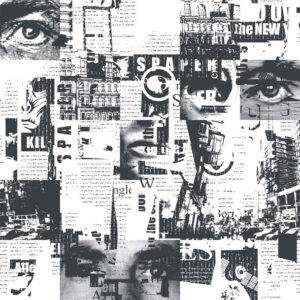
Books like Wolfe’s The Right Stuff mixed truth and dramatization, documentation and invention, to tell larger stories about serious events. In dramatizing those stories, New Journalism writers also drew more readers and achieved broader awareness of the stories.
At the same time, long-form New Journalism pieces, deeply researched and documented, were able to report stories in depth in a way that traditional journalism often did not. By invoking plot, characterization, and narrative structures, the New Journalists could keep readers involved in long and complex issues ranging from crime to politics to culture.
New Journalism is important in defining what is creative writing because it is clearly an example of both creative and journalistic writing. It demonstrates the ways that creative writing can serve other forms of writing and other kinds of writers.
Of course, it’s also possible to come at the divide from the other shore. Categories of writing that are clearly creative in nature include:
- Novels and novellas
- Flash fiction and short stories
- Plays and film scripts
These works incorporate elements of storytelling that may not always be present in other forms of writing. A newspaper article will often have a setting, action, and characters; creative writing will offer plot, pacing, and drama in describing the same story.
What is Creative Writing Coursework Like in College Degree Programs?

All university students are exposed to basic coursework in English language and communication skills. These all go to the elementary aspects of writing—the ability to construct a sentence, a paragraph, a paper. They teach grammatical rules and other elements that make a work readable to any reader of the English language.
Even the general education requirements in college programs touch on creative writing, however. Students may be assigned to write essays that explore creative styles and imagination. They’ll be assigned to read novels and stories that are time-tested examples of the finest kinds of creative writing. And they’ll be asked to explore their impressions and feelings, and to exercise their imaginations and analyze the intent of the author.
Creative writing programs go beyond the basics to touch the imagination of the writer.
Creative writing exists just on the other side of those general English and literature courses. Students in creative writing classes will be asked to take the extra step of creating their own stories using the techniques they have learned.
In fact, they may be encouraged to break the same rules that were so laboriously learned in their regular English writing classes. Creative writing works to allow writers to tap into their own imagination and emotion to forge a deeper connection with readers.
Student Workshops Offer an Interactive Way of Learning What Creative Writing Is All About
Creative writing degrees will go much further into developing a sense of what creative writing is. they continue to include many reading assignments. but instructors also introduce concepts such as:.
Genre is the method used to categorize written works. Creative writing programs explore the tropes and expectations that exist for different genres and deconstruct them for better understanding.
Story structure and form
The structure and form of a novel and a short story are very different. Creative writing programs explore different formats and how they impact creative storytelling.
Plot is not a universal feature of creative writing, but a good plot can make or break a creative work. Classes look at the features and composition of plot, and also teach plotting.
Voice, tone, and creative expression all come out of the narration of a piece of creative writing. Creative writing courses explore both the textbook forms of narrative and show how to use it to serve plot and story.
Style and rhythm
One clear feature of creative writing in all genres is that it rests on a sense of rhythm and of styling that other types of writing ignore. Many courses found in creative writing degree programs explore the ways in which writing style serves story and hooks the reader.
In addition to formal classes, students will better learn why creative writing is important and the purposes it serves through workshops. These informal gatherings are designed to foster discussion, to present examples of different types of writing, and to critique and hone individual creative writing skills .
Through that process, creative writing degrees help students better identify what creative writing is and how to use it effectively.
Creativity is Important No Matter What Your Career Goals in Writing May Be

Creative writing training allows writers in any genre to develop more complete, more meaningful, and more memorable ways to get a point across. Using the skills and techniques learned in creative writing courses can inject humor, gravity, and other sensations into any piece of writing. And those very techniques can improve concision and clarity.
Figuring out what creative writing is and what it is not, is the first thing you should leave behind in a writing career. The dry definitions of the dictionary or droning English professors are the last place you should look.
Creative writing is the process of engaging your imagination and talent to serve the purpose of whatever piece of writing you are working on. And that’s why creative writing is important.

Fall Quarter
- Student Login Username Password Remember my password --> Submit Forgotten Username/Password New Student Account Setup Existing Student Account Setup ? Close This form is for current or former Stanford Continuing Studies students who do NOT already have a student login. Click here if you already have a student login account and have forgotten your username or password.
- Join Email List Sign up
Online Courses
Online courses: creative writing.
Stanford Continuing Studies' online creative writing courses make it easy to take courses taught by instructors from Stanford’s writing community. Thanks to the flexibility of the online format, these courses can be taken anywhere, anytime—a plus for students who lead busy lives or for whom regular travel to the Stanford campus is not possible. These courses are open to all adults, and we encourage all levels of writers to enroll.

| Code | Course Title | Qtr | Days | Format | Status | ||||||||||||||||||||||||||||||||||||
|---|---|---|---|---|---|---|---|---|---|---|---|---|---|---|---|---|---|---|---|---|---|---|---|---|---|---|---|---|---|---|---|---|---|---|---|---|---|---|---|---|---|
| FA | Flex Online | Closed | |||||||||||||||||||||||||||||||||||||||
| FA | Flex Online | Open | |||||||||||||||||||||||||||||||||||||||
| FA | Flex Online | Open | |||||||||||||||||||||||||||||||||||||||
| FA | Flex Online | Closed | |||||||||||||||||||||||||||||||||||||||
| FA | Flex Online | Closed | |||||||||||||||||||||||||||||||||||||||
| FA | Flex Online | Open | |||||||||||||||||||||||||||||||||||||||
| FA | Flex Online | Closed | |||||||||||||||||||||||||||||||||||||||
| FA | Flex Online | Open | |||||||||||||||||||||||||||||||||||||||
| FA | Flex Online | Closed | |||||||||||||||||||||||||||||||||||||||
| FA | Flex Online | Closed | |||||||||||||||||||||||||||||||||||||||
| FA | Flex Online | Closed | |||||||||||||||||||||||||||||||||||||||
| FA | Flex Online | Closed | |||||||||||||||||||||||||||||||||||||||
| FA | Flex Online | Closed | |||||||||||||||||||||||||||||||||||||||
| FA | Flex Online | Closed | |||||||||||||||||||||||||||||||||||||||
| FA | Flex Online | Closed | |||||||||||||||||||||||||||||||||||||||
| FA | Flex Online | Closed | |||||||||||||||||||||||||||||||||||||||
| FA | Flex Online | Closed | |||||||||||||||||||||||||||||||||||||||
| FA | Flex Online | Closed | |||||||||||||||||||||||||||||||||||||||
| FA | Flex Online | Closed | |||||||||||||||||||||||||||||||||||||||
| FA | Flex Online | Closed | |||||||||||||||||||||||||||||||||||||||
| FA | Flex Online | Closed | |||||||||||||||||||||||||||||||||||||||
| FA | Flex Online | Open | |||||||||||||||||||||||||||||||||||||||
| FA | Flex Online | Closed | |||||||||||||||||||||||||||||||||||||||
| FA | Flex Online | Open | |||||||||||||||||||||||||||||||||||||||
| FA | Flex Online | Open | |||||||||||||||||||||||||||||||||||||||
| FA | Flex Online | Open | |||||||||||||||||||||||||||||||||||||||
| FA | Flex Online | Closed | |||||||||||||||||||||||||||||||||||||||
| FA | Flex Online | Closed | |||||||||||||||||||||||||||||||||||||||
What is Creative Writing? | An Introduction for Students
Last updated: 30th august 2024.
Rhys Mackenzie
Rhys mackenzie is the website marketing manager at oxford summer courses. with extensive experience in seo and digital content management, they are passionate about showcasing the best that oxford has to offer. their previous role at experience oxfordshire gave them a deep appreciation for the city's unique cultural and academic offerings. learn more about rhys here ., what’s included in an oxford summer course.
Our tailored summer courses for ages 9-24 include all teaching and academic content, accommodation, meals (including Friday night formal dinners), a prize-giving ceremony, all-day trips and activities, airport transfers, access to Oxford Summer Courses Foundations, travel and medical insurance, and a welcome pack. Apply now to secure your spot in one of our comprehensive summer courses.
What is creative writing?
As the name suggests, creative writing is a form of writing that goes beyond the traditional realms of normal, professional, academic or technical forms of writing.
Instead, it encompasses a number of different genres and styles across a whole range of fields of both fictional and non-fiction writing; storytelling, playwriting, poetry, prose, journalistic, and more.
Though the definition can be quite vague, creative writing can, for the most part, be considered as any type of writing that is original and expressive of oneself. Typically, it can be identified by an emphasis on narrative craft, focusing on elements such as character development, narrative and plot, infusing its structure with imagination, invention and story.
In this sense, creative writing can technically be considered any writing of contemporary, original composition - it's bound by no standard conventions and uses a whole range of elements in its craft.
In an academic setting, creative writing is typically divided into fiction, poetry, or scriptwriting classes, with a focus on writing in an original style, not defined by pre-existing structures and genres.

What are the different types of creative writing?
Creative writing comes in many forms, encompassing a number of genres and styles. There are lots of different types of creative writing, which can be categorised as fiction or non-fiction. Some of the most popular being:
- Biographies
- Fiction: novels, novellas, short stories, etc.
- Poetry and spoken word
- Playwriting/scriptwriting
- Personal essays
What makes a good piece of creative writing?
First and foremost, it’s important to note that there is no pre-defined description of what it means to create a ‘good’ piece of creative writing. As the very name suggests, creative writing is an imaginative process, created by the individual with all their quirks and personalities.
Creative writing doesn’t fit one set genre and therefore there will never be an umbrella definition to describe the ‘perfect’ piece. Just think about a Gothic short story and then compare it to the features of a great Romantic poem - the two are so very different - it wouldn’t be unfair to judge them together.
However, with that being said, there are a few general principles that you can follow to make your creative writing as strong as it can be - by making it as authentic and true to you as possible:
- Know your audience - All great stories begin with a target audience in mind - because it’s exactly what you need to know in order to really tailor your writing and connect with them. Therefore, any creative writer should begin their writing by plotting out exactly who they want to read their work. Once you have this in mind, your writing will naturally begin to take direction and flow in a way that seems appropriate to your audience.
- Write what you know - Quite often, the best stories are those which we can connect to and relate in one or another way to our own lives. Or, they’re stories which seem to authentic that you could imagine it to be about the writer’s own life. Now, this doesn’t mean that you quite literally have to write about your life, but drawing on knowledge you have about different elements of our lives to give your story some authenticity and more believability.
- Creativity is key - Creativity is one of the most important elements of creative writing. It’s what sets you apart from other pieces of writing in your genre. Of course, this doesn't demand that you write a tale about a totally fantastical and mythical world with unique creatures - but simply use your creativity to think a little outside the box and put a unique twist on things; using literary devices like metaphors, alliteration, and varied sentence structure to make your work unique and interesting.
- Push your imagination - One of the great things about creative writing is that there is no definition or rules on ‘how’ to write. It’s a much more subjective genre and one which relies heavily on your own interpretations. Therefore, you should push your imagination to the limits to see what the end result could be. Some of the most interesting pieces of literature are thought-provoking or make us question the writing or world around us - where could your story take us?
- Plot a loose story arc - Despite the loose bounds of creative writing, it is still advisable to plot a loose story arc for any piece of literature you create. Story arcs are critical at giving your writing direction and purpose, helping you to write the whole piece at a good pace, without writing any superfluous content or ‘waffle.’ Follow your story arc, and your writing will have a strong structure, pace and direction - keeping your readers more engaged.
What are some techniques used in creative writing?
To make their writing stand out, writers often employ several creative writing techniques and literary devices, including:
- Character development - The process of creating a well-rounded, realistic character with depth, personality, and clear goals or motivations.
- Plot development - The story of your piece of writing - how it develops, unfolds, and moves along in time.
- Point of view - The perspective from which a narrative is told. It indicates who is telling the story and how the information is conveyed to the reader. Quite often writers will play with the point of view of the central character or protagonist to trick the reader and twist their perspective.
- Dialogue - Refers to the speech and conversations characters use to speak to one another. Dialogue and the language choices a character makes can be pivotal in helping define their personality.
- Literary devices - Such as metaphors, similes and alliteration to make creative writing more imaginative and descriptive. These are used in a myriad of ways by writers to make their writing more vivid, interesting and engaging.
Can creative writing be taught?
Of course! Creative writing can be taught, and is a very popular subject for university students, and for those who attend our summer courses.
Those who pursue the subject of Creative Writing will typically study a variety of texts from different periods of time to learn more about the different genres of writing within the field. They’ll become familiar with some of the leading creative writers from generations past to present, as well as some lesser-known and emerging writers in the industry.
Inspired by what they’ve learnt in the classroom, it’s not uncommon for Creative Writing students to also participate in regular workshops and scratch sessions, where they bring a piece of their writing along to class and have it read by other students and the tutor. They’ll leave with constructive feedback on how to improve their writing, or recommendations of other works which they may want to read to take influence from.
How to start creative writing
If you’re interested in getting those creative juices flowing and improving your writing craft, read some of our tips below on how to start creative writing:
- Read as much as you can - For creative writers, inspiration comes from a whole range of sources, but most commonly, from other writers. There’s some excellent examples of creative writing throughout history that all writers should be inspired by. Read a variety of genres by different authors to get a real feel for what type of writing you may want to do. Need some inspiration? Check out our blog: 15 Classic Books to Read
- Start journaling - Starting a journal can really help to unleash your inner creativity. Getting into the habit of writing each day about literally anything that’s preoccupied you that day will help you practice the art of writing. The more regularly you journal, the more you’ll build your confidence. You never know, you could even find your next great idea from something you’ve journaled about!
- Attend a Creative Writing summer course - If you’re just starting out as a creative writer and looking to collaborate, share ideas with others and workshop your writing, then joining a creative writing summer school could be a great option. Our creative writing summer courses are designed to help you extend your creative writing toolkit; you’ll analyse some of the industry’s greatest writers, as well as workshop some of your own writing with your peers.
- Practice using literary devices - Literary devices, such as metaphors, similes and rhyme can really help you write more vividly and create really descriptive, imaginative scenes. Practice using them regularly and you’ll soon watch your own creative writing start to flourish. Need some ideas to help you get practising? Look around your house and pick a random object. Then, practice using 5 literary devices to describe that same object - see where your creativity can take you!
- Write, write, write! - When it comes to how to start creative writing, one of the biggest pieces of advice we can offer is to pick up your pen or laptop, and start writing. Whether you have a single conversation starter for a character, or a complete narrative arc, you will only begin your creative writing journey when you physically do it. Even if you have no idea on what to write - look for writing prompt inspiration from all around you. The more you practice unleashing your creativity, the easier it will be to write over longer periods of time.
Frequently Asked Questions (FAQs)
What age groups are the oxford summer courses designed for.
Our courses cater to students aged 9-24, with tailored programs to suit different age groups and academic levels.
What is included in the Oxford Summer Courses?
Our comprehensive summer courses include all teaching and academic content, accommodation, meals (including formal dinners), a prize-giving ceremony, all-day trips and activities, airport transfers, travel and medical insurance, and a welcome pack.
Can international students apply for the courses?
Yes, we welcome students from all over the world to join our summer courses in Oxford and Cambridge.
What are the benefits of taking a Creative Writing summer course?
Our Creative Writing summer courses offer students the opportunity to learn from experienced tutors, develop their writing skills, and gain inspiration from the historic surroundings of Oxford and Cambridge.
How can I apply for the Oxford Summer Courses?
You can apply for our courses online through our application portal . Once your application is submitted, we will be in touch with the next steps.
Creative writing is a remarkable voyage that invites us to unleash our imagination, share our stories, and inspire others. It offers countless personal and professional benefits, nurturing self-expression, empathy, and creativity. So, grab a pen, open your mind, and embark on this enchanting journey of creative writing with Oxford Summer Courses. Let your words paint a vivid tapestry that captivates hearts and minds under the guidance of experienced tutors from Oxford and Cambridge. Join us as we explore the magic of creative writing and discover the transformative power it holds within through the renowned Oxford Summer Courses summer school.
Ready to Join Oxford Summer Courses?
After submitting your application, we'll be in touch very soon to inform you of the outcome. Apply now to begin your journey with Oxford Summer Courses!
Share this article
Discover the enchantment of creative writing with Oxford Summer Courses. Unleash your imagination, explore different genres, and enhance your communication skills. Nurture self-expression, empathy, and creativity while gaining valuable writing techniques.
Get Our Newsletter
Oxford Summer Courses LTD
18 Beaumont Street, Oxford, OX1 2NA, United Kingdom
+44 01865 818403

Juniors 9-12
Oxford 13-15
Oxford 16-17
Oxford 18-24
Cambridge 13-15
Cambridge 16-17
Advanced Cambridge 18-24
Back-To-Back Courses
Four Week Enhanced Programme
Group Bookings
GDPR Notice
Privacy Policy
Terms and Conditions
Oxford Summer Courses is an organisation which contracts with the colleges of the Universities of Oxford, Cambridge and London for the use of facilities, but which has no formal connection with the Universities of Oxford, Cambridge and London.
Oxford summer courses © 2024, oxford summer courses is a company registered in england and wales with company number 08011543.
Stanford Creative Writing Program
The Stanford Creative Writing Program, founded in 1946 by Wallace Stegner, has become one of the nation’s most distinguished creative writing institutions. After almost 80 years, the program continues to evolve while also respecting its original vision of recruiting and supporting talented writers, offering exceptional creative writing instruction and mentorship, and inspiring undergraduates to develop their own unique creative written expression.
In the 1940s, E. H. Jones generously created the Wallace Stegner Fellowship, now considered the most prestigious creative writing fellowship in the U.S. for emerging writers. Dr. Jones also made possible the Jones Lectureships, which are limited, fixed-year teaching appointments, allowing exceptional Stegner Fellows some time and support to prepare a manuscript for publication, hone their teaching skills, and transition to a longer-term teaching career elsewhere.
The original framework of term-limited appointments allowed for a consistent flow of selected Stegner Fellows into the Jones Lectureship. However, over time this framework of term-limited appointments was not followed.
In the past two years, the School of Humanities and Sciences leadership and the Creative Writing Academic Council faculty have been working to formulate necessary changes in the program and to identify additional resources to meet its growing needs. A Working Group of Creative Writing Academic Council faculty held listening sessions and discussions.
Now, after thoughtful deliberation, the Working Group has recommended restoring the original intent of the Jones Lectureships: one-year appointments with the possibility of renewal for a limited term, up to a total of five years. This change will again allow Stegner Fellows the opportunity to apply to be Jones Lecturers once they have completed their fellowships. In other words, the Jones Lectureships are not being eliminated; they are only being term limited, as was the original intent of the program, so that the Stegner Fellows have an opportunity to teach Creative Writing courses at Stanford. We plan for there to be as many lecturers in the Program in five years’ time as there are today, and we expect to offer more classes then than now.
The university, school, and numerous generous donors are committed to not only the excellence of the program but also its growth. This means increasing the number of Creative Writing classes to better meet high student demand as well as ensuring competitive compensation for both the lecturers and fellows. We will provide more updates in early fall quarter about the Creative Writing Program and how it will continue to be one of the preeminent programs in the nation.
We understand that these changes to the Jones Lectureships will be met with mixed reactions. However, we firmly believe that the changes advance the program’s pedagogical mission and provide promising writers with the resources to complete their books and obtain appointments at other colleges and universities.
Throughout the history of the program, the Jones Lecturers—both those who are here now and those who have been lecturers in the past—have helped make Stanford Creative Writing what it is today, and we are truly grateful to them for their significant contributions to the program’s mission.

Creative Writing
The Department of English offers creative writing instruction in multiple formats and offers several degrees and qualifications.
Undergraduate
At the undergraduate level, students who are enrolled in a B.A. program at UT Austin can pursue the Creative Writing Certificate .
We offer two MFA programs in creative writing:
- the New Writers Project
and
- the Michener Center for Writers.
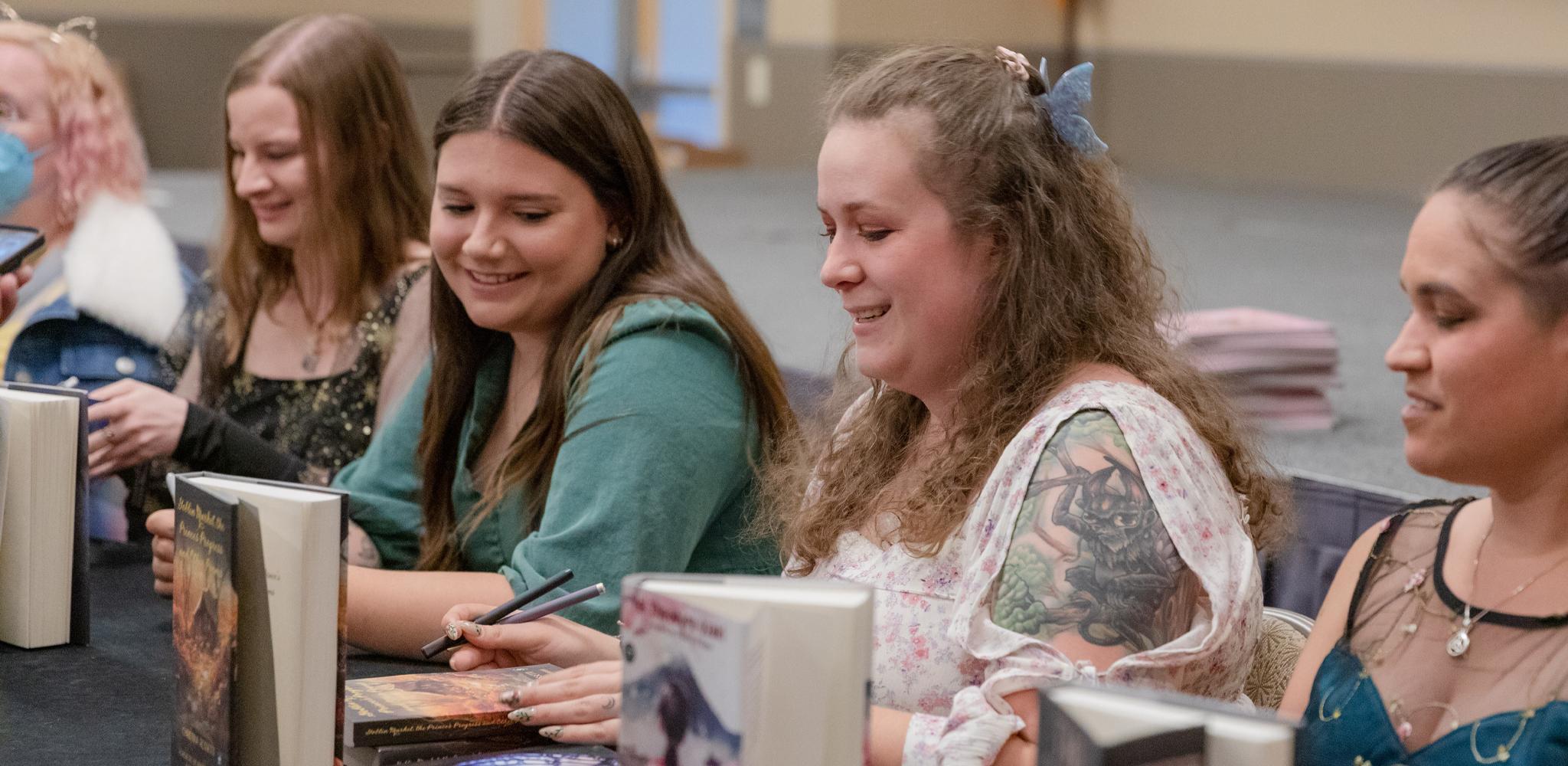
Graduate Program in Creative Writing
Master of Arts in Creative Writing, Master of Fine Arts in Creative Writing
Master of Arts, Master of Fine Arts
Genre Fiction, Nature Writing, Poetry, Publishing, Screenwriting – an advanced degree in any of our five areas of creative writing provides you the opportunity to hone your craft, elevate your art, and inspire the world. Join our welcoming and inclusive community and become the writer you are meant to be. To learn more about our program directly from our faculty and students, check out our program video .
Program Overview
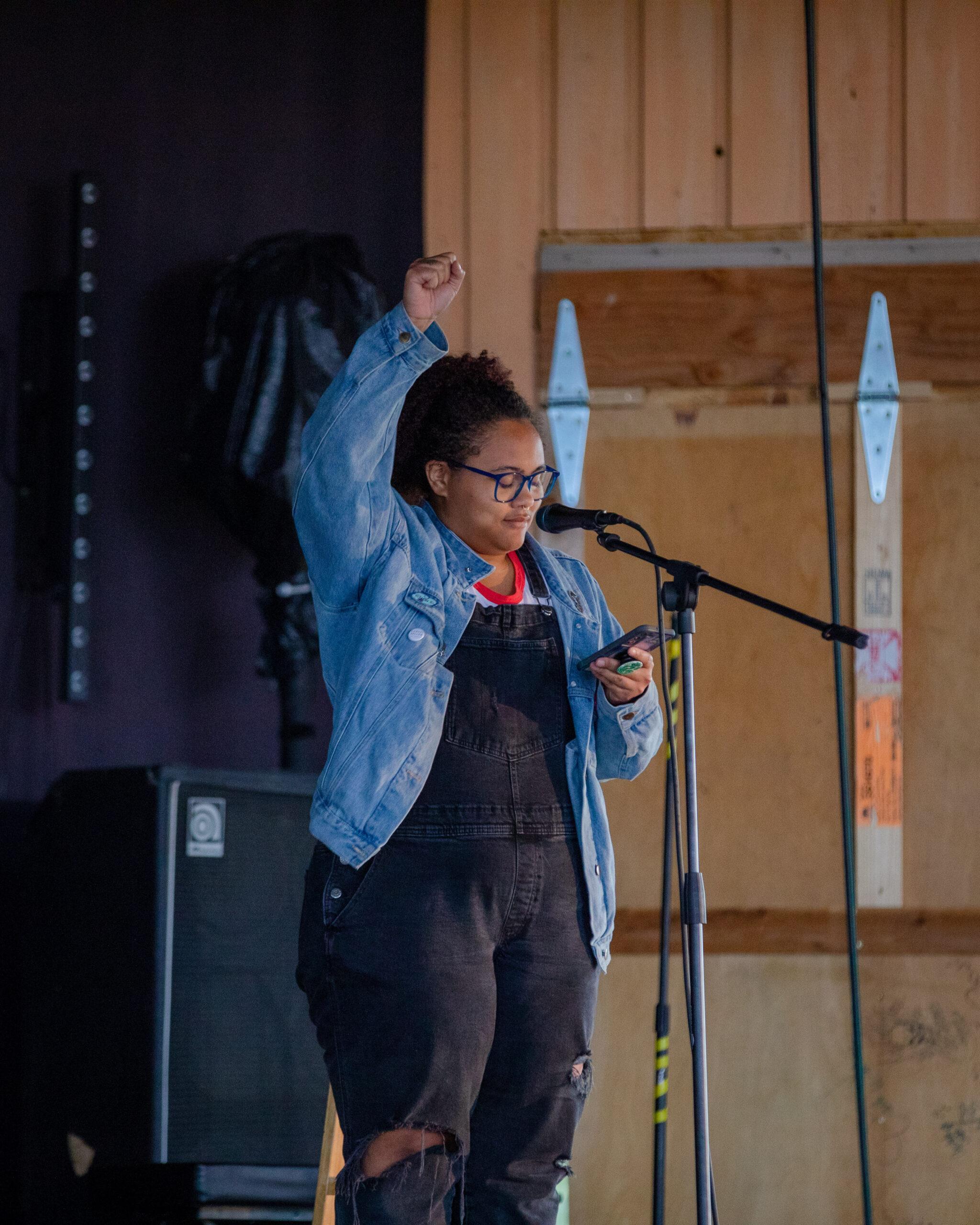
Pursue your dream of becoming a published author.
If you’re looking to get serious about your writing and you’re eager to join a thriving and diverse community of writers, then you’ll find your niche in Western Colorado University’s Graduate Program in Creative Writing. Our five innovative areas of study—Genre Fiction, Nature Writing, Poetry, Publishing, and Screenwriting—offer cutting-edge courses, and our dedicated faculty of award-winning writers will ensure that you achieve your full potential as a writer.
Our low-residency model makes a graduate education accessible. During the academic year, students work closely with faculty and fellow students through videoconferencing and online courses. Each summer, all students take intensive courses that culminate in a one-week residency on Western’s beautiful campus in late July. These residencies are packed full of exciting courses, inspirational workshops and lively social events.
Sharing work in community
Screenwriting student Tia Phillip giving a reading at the 2023 Open-Mic Night
Faculty & Staff
Kevin j. anderson, mfa.
Director, Publishing Concentration
Byron Aspaas, MFA
Poetry Faculty
Karen Auvinen, Ph.D.
Nature Writing Faculty
Claire Boyles, M.A.
Screenwriting and Nature Writing Faculty
Steve Coughlin, MFA
Professor of English
Julie E. Czerneda
Genre Fiction Thesis Mentor
Amy Fox, MFA
Screenwriting Faculty
CMarie Fuhrman, MFA
Associate Director; Director, Poetry Concentration; Faculty, Nature Writing Concentration
Geoff Geib, MFA
Gwyneth gibby, m.a..
Publishing Faculty
Sarah Goettsch
Graduate Program in Creative Writing Coordinator
Carol D. Guerrero-Murphy, Ph.D.
Tyson hausdoerffer, ph.d..
Director, Graduate Program in Creative Writing
Mitali Jahagirdar, MFA
Tenea d. johnson, m.a., julie kane, ph.d., lindsay king-miller, mfa.
Thesis Mentor
Gary Lilley
Allyson longueira, m.a., js mayank, mfa.
Interim Director of Screenwriting
Cameron McGill, MFA
Candace nadon, ph.d..
Genre Fiction Faculty
Johanna Parkhurst, M.A.
Director, Genre Fiction Concentration
Laura Pritchett, Ph.D.
Director, Nature Writing Concentration
Laura Resau, M.A.
Nature Writing/Genre Fiction Faculty
Ligiah Villalobos Rojas, MFA
Liz sczudlo.
Screenwriting Thesis Consultant
Andrew Sellon, MFA
GPCW Faculty, Performance Coach
Derek Sheffield, MFA
Ana maria spagna, mfa, anna stileski, m.a..
Executive Assistant
Richard Wilber, Ed.D.
Genre Fiction Faculty, Graduate Thesis Coordinator
Maya Jewell Zeller, MFA
Nature Writing and Poetry Faculty
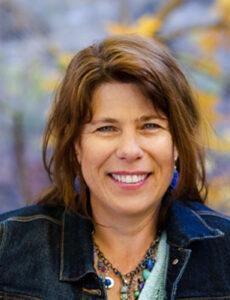
Laura Pritchett
Laura Pritchett, who directs the MFA with a concentration in Nature Writing, has two novels coming out in 2024, and they could not be more different.
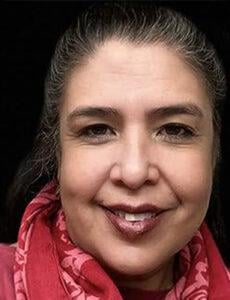
Ligiah Villalobos Rojas

Melissa Dalton-Martinez
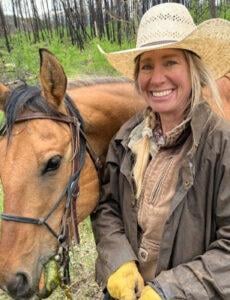
Lara Richardson
Take the first steps toward your academic and personal growth..
Fostering your intellectual development is the primary focus of every academic program at Western. Our professors and Office of Career Services will help you identify your strengths, hone your skills, define your goals, and prepare for a fulfilling and enriched life after graduation.
News & Research
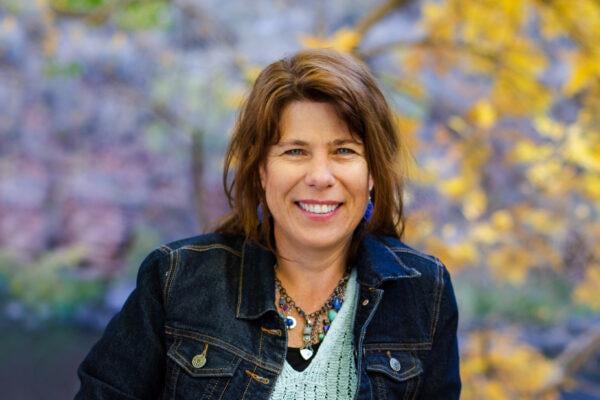
Western’s MFA Director Laura Pritchett’s latest novel is born from a world on fire

Western Earns Accreditation from the Higher Learning Commission
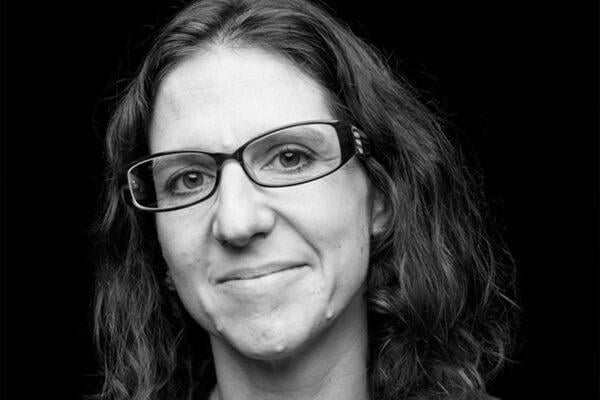
Western Poetry Faculty Member Chosen for Prestigious Poetry Prize
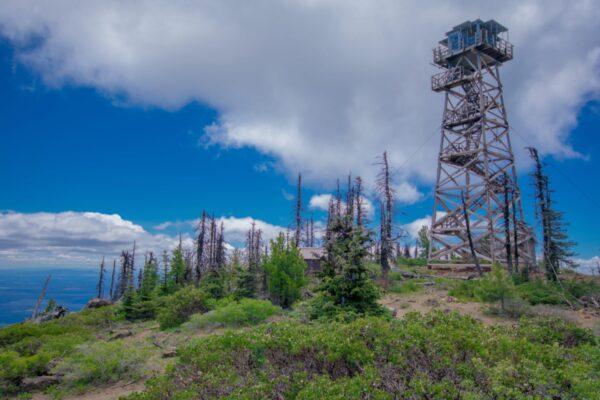
Teaching into the Firetower
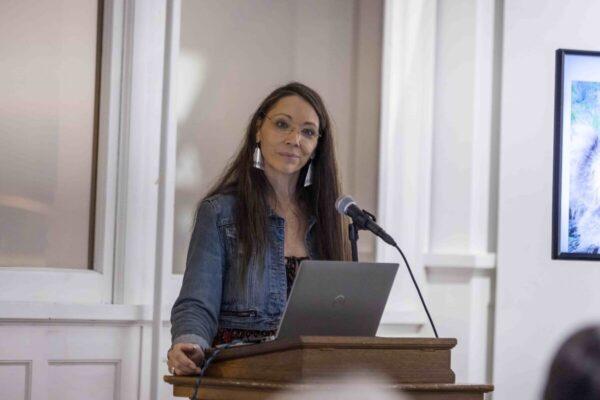
Western’s CMarie Fuhrman Releases New Anthology & Public Radio Podcast
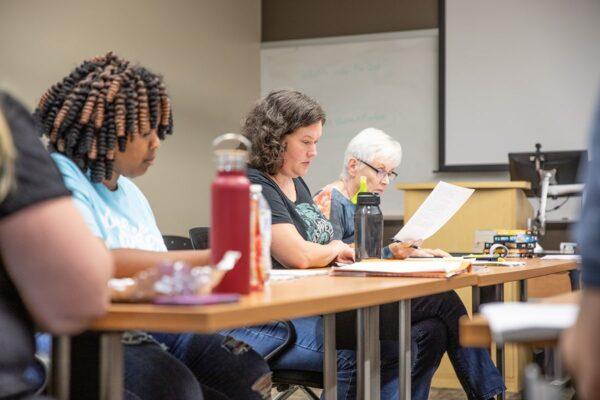
Nature Writing and Western Press Books to Produce Inaugural Book
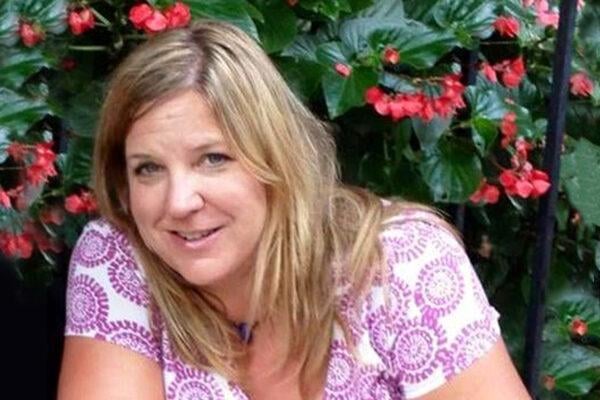
Renown Author Karen Auvinen to Join Western Faculty
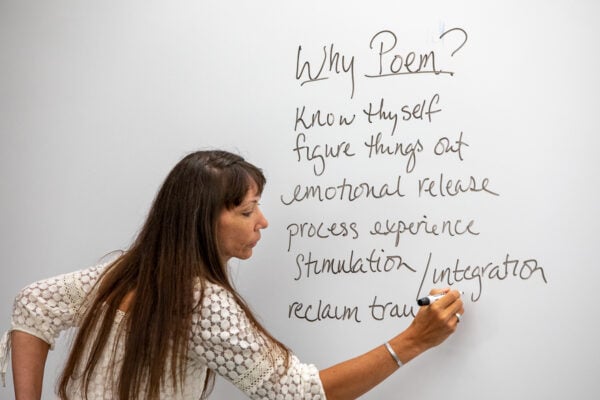
Western Instructor Named to Top Writer’s Honor
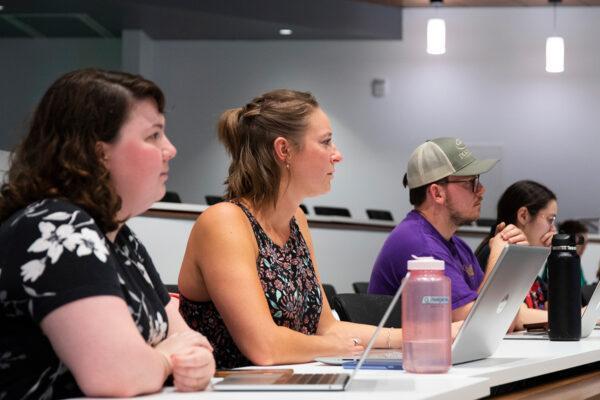
Graduate Program Pushes Caps on Enrollment During Pandemic

Western Professor Named to Authors’ Hall of Fame
Additional resources, admission requirements & application.
Western’s Graduate Program in Creative Writing considers applications in four waves throughout the year: Early Admissions, from July 1 through November …
Tuition & Fees
Full-time enrollment in the MFA extends over 25 months, spanning four non-residency semesters and three Summer Residencies. Students may also attend half-time or take a leave of …
Scholarships & Financial Aid
The GPCW is deeply committed to raising funds to support our students. Each year we offer substantial direct-funding scholarships. The GPCW is currently …
Summer Residency
The highlight of our academic year is the Summer Residency, held each July on Western’s beautiful campus in Gunnison, Colorado.
How can a low-residency format create a sense of community among students and faculty?…
Publications
Publications in the Creative Writing Graduate Program Explore the publications below to discover the depth and breadth of Western’s Graduate Program in Creative Writing: Think Journal Christine …
GPCW Mission, Indigenous Commitment and DEIA+ Statements
The Graduate Program in Creative Writing at Western Colorado University seeks to create transformative learning experiences for our students, built from a strong foundation that honors our students’ unique voices and is supported within inclusive environments established both virtually and at yearly residency gatherings.
Learn More about the GPCW
Interested in learning more about the Graduate Program in Creative Writing? There’s no better way to get to know our program than through the voices of our faculty and students. Tune in to watch this informational video about everything you’ll look forward to as a student in our program.
Related Programs

Genre Fiction
Master of Arts | Master of Fine Arts

Graduate Program in Creative Writing (GPCW) 3+2
Accelerated Degree Programs

Nature Writing
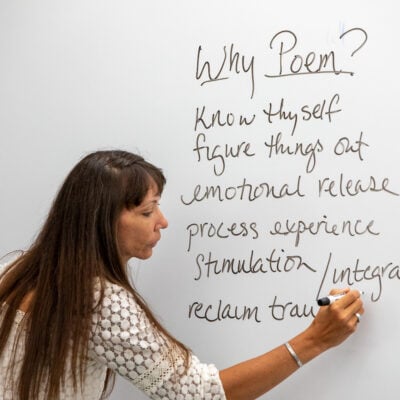
Master of Arts
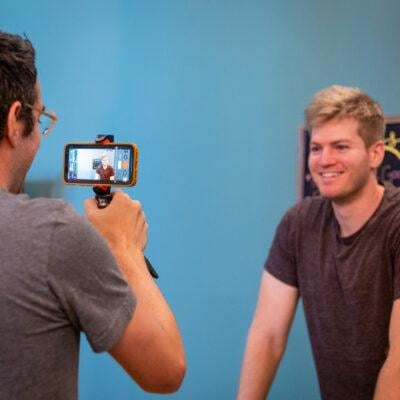
Screenwriting
Department information, associate director, program coordinator, contact information.
970.943.2014
Campus Location
Western Colorado University Quigley Hall 117 1 Western Way Gunnison, CO 81231
Take the Next Step
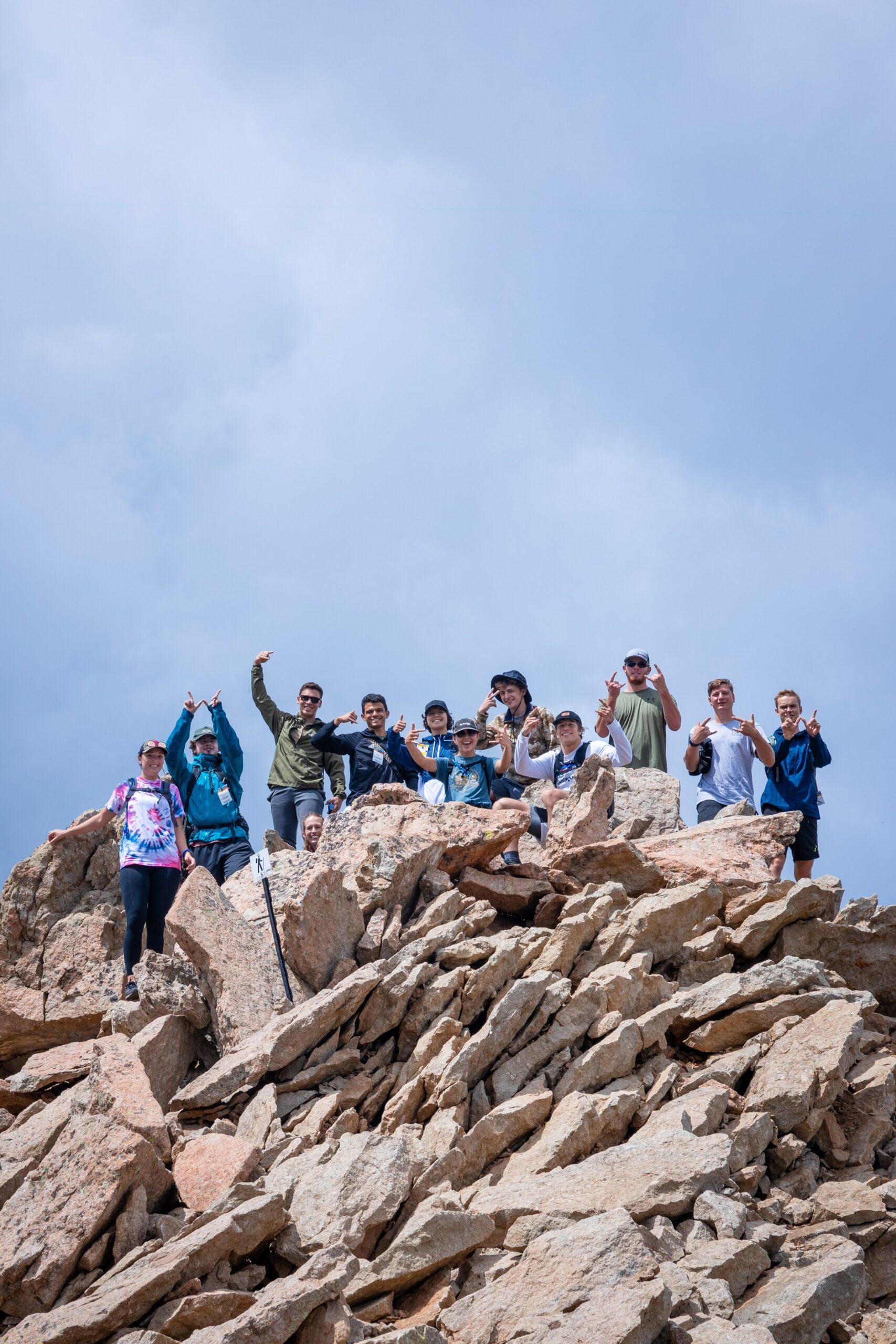
Apply to Western
We understand that applying to a university can be daunting, which is why we make our admission process as simple and straightforward as possible. Learn more about applying to your program of choice at Western.

Visit Western
The best way to find out what makes Western such a special place is to experience it for yourself. Our student-led tours give you an insider’s perspective on everything from academics to student life.
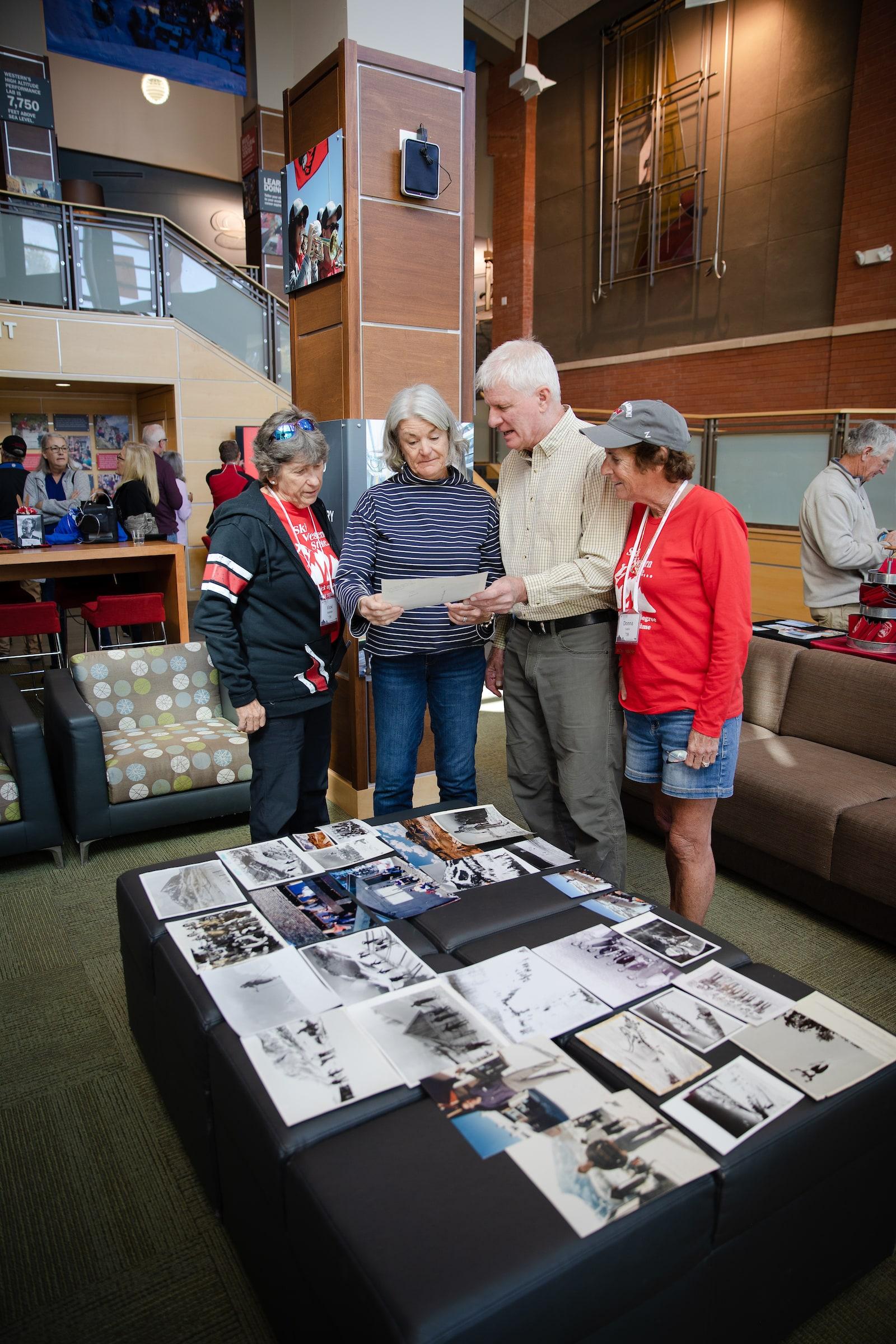
Alumni Community
We keep the Mountaineer spirit going strong within our alumni community. Whether getting together with friends at an annual event, making a donation or mentoring a student, graduates continue to play an important role in the Western community.

Request Information
Want to discover more about Western? Request information today to get in touch with the admissions team.
Select your Undergraduate Student Type
- Request Info
- Faculty Finder

Creative Writing
Master of Fine Arts
Write toward a more just world.
Regis University’s Mile-High MFA in Creative Writing is a low-residency program that lets you stay at your job and close to your family while pushing you to make time for writing. You’ll leave the program with a polished thesis manuscript, along with an action plan for putting your writing into practice in the world.
The Mile-High MFA provides students one-on-one instruction in poetry, fiction or creative nonfiction. Along with theory, workshops, seminars and readings by accomplished authors, the MFA program’s unique focus combines a thorough instruction in the craft and business of writing with the practical application of writing as a career.
Jesuit Vision The Mile-High MFA celebrates the ways in which storytelling impacts our social and cultural lives, promotes social justice, and enacts change in the world. Our program is a place for writers from various backgrounds, genres, specializations, and aesthetics to come together and learn from one another in an open and supportive environment. We value writers who are socially engaged, who critically examine the assumptions and social privileges of discourse, and who seek to further a literature and community that respects and values diverse perspectives and authorships. Our program emphasizes anti-racist, liberatory, and humanist pedagogies, stemming from the Jesuit values central to our university.
- Fiction (YA, Speculative, Literary, Flash, Hybrid)
- CNF (memoir, essays, historical narratives)
- Poetry (any/all)
Not sure if this is the creative writing program for you? Compare the Mile-High MFA in Creative Writing with the Master of Arts with specializations in Creative Writing and Literature
Ready to apply? See how
Request More Information About This Degree
Program snapshot.
Program Format Online: Semester-based courses On Campus: Four 10-day residencies
Credits for Completion 78 credit hours
Tuition for the 24-25 Academic Year $721 per credit hour
See cost of attendance
View Full Degree Curriculum and Requirements

Degree Overview
The Mile-High MFA requires the successful completion of four 16-week writing semesters and five ten-day residencies. Students will begin with an Orientation at their first residency and end with an MFA Degree Ceremony in their final residency. Following each residency (except the last) will be a semester-long study in which students will work one-on-one with a faculty mentor. By their final residency, students will have written and revised 240-400 pages of prose (fiction, nonfiction) or 160-240 pages of poetry, hybrid or flash fiction, along with at least 16 book annotations, a thesis proposal, a book-length thesis, a critical preface to their thesis, a Writing in the World Action Plan and an MFA Portfolio.

Writing in the World
During the residencies, you will attend seminars on the real-life applications of writing. By your final residency, you’ll submit a Writing in the World Action Plan in which you describe how you will use your writing talents to contribute to your community, either in a professional capacity or through community outreach. Examples include running a writing workshop at a local prison or library, writing for a nonprofit, organizing a reading series or running an after-school “Teen Writers” workshop.

Career Preparedness
In addition to study in the major genres of poetry, fiction, and creative nonfiction, our program offers a Graduate Workshop exploring the publishing world (market trends, working with agents, first book deals, query letters, and more).
Program Specializations
This specialization will require 12 additional semester hours, for a total of 67 credits. Dual-genre students will take three residency workshops and three semesters in their main genre (i.e. the genre in which they will write their MFA thesis) and two residency workshops and two semesters in their secondary genre.
Creative Writing Pedagogy
This specialization will require 12 additional semester hours, for a total of 67 credits. Creative Writing Pedagogy students will take four 3-credit ($555 per credit) 8-week online courses (Writing as Social Action; Creative Writing in the Literature Classroom; Literary Criticism and Theory; and Writing and Rhetoric of Nonfiction) via Regis University’s MA in Literature and Creative Writing.

BA/MFA Dual-Study Degree
The BA/MFA dual-study degree allows undergrads to earn a semester’s worth of credit towards their master’s degree while completing undergraduate credits, so students can earn a master’s degree in one year.
Prerequisites
- Three undergraduate creative writing courses with grades of B+ or better.
- Undergraduate Major or Minor in English or Writing, with 3.0 GPA or better in EN courses.
Program Features
- 12 undergraduate credits are applied to the MFA degree (6 for the first semester, 3 for the intervening 9-day residency, and 3 for the second semester) during the student’s senior year.
- Student completes the MFA degree in three semesters instead of four and attends four residencies instead of five.
- A five-page writing sample in the genre they will want to study in graduate school
- A one-page letter of interest; and
- A letter of recommendation from a Regis College English writing instructor

Residency Overview
Twice a year, in January and July, students will attend ten-day residencies, from Friday evening to the following Sunday afternoon, with an “Intermezzo” on Wednesdays. Residencies are inspiring, invigorating gatherings of like-minded writers that provide students with the opportunity to learn their craft, workshop their writing, attend readings by award-winning writers and immerse themselves in the writing life.
Residency Features
- Orientation for New Students
- Morning Genre Workshops
- Community Lunch (catered)
- Afternoon Craft Seminars, Panels, and/or Readings
Thesis Defenses
- Student/Faculty Semester Study Plan Meetings
MFA Degree Ceremony
Morning workshops.
The Mile-High residencies offer concentrated periods of time when students can hone their writing in small peer workshops orchestrated and facilitated by our faculty. The workshops will take place every morning and include some writing lessons/prompts by the faculty member, critiques of student work by faculty and peers, and group discussions of a variety of writing issues. Students will attend a minimum of six of the seven workshop classes to receive credit for their residency.
Afternoon Craft Seminars/Panels/Readings
In the afternoons, students will attend seminars on the theory and craft of writing, as well as panels on interpretations of canonical and contemporary works, on examples of “Writing in the World” projects (ways in which one may make use of their writing talents for the public good), on the teaching of writing, and on the business of writing and publishing, and readings by current students, alum, faculty, or visiting writers. Students will attend a minimum of ten craft seminars, panels, and/or readings to receive credit for the workshop portion of their residency.
A unique feature of the Mile-High MFA, our Wednesday “Intermezzo” is an opportunity for students to pull back from their busy activities and enjoy what our campus, the Mile-High City, and the Rocky Mountains have to offer, or to enjoy some quiet writing time. Revitalized by their Intermezzo experience, and with a strengthened sense of community among students across genres, students will dive into the second half of their residencies with renewed fervor and focus.
Every residency will feature public thesis defenses, when our graduating students will formally defend their theses.
At the end of each residency we will celebrate our graduating students in an MFA Degree Ceremony. All students, as well as family and friends of the graduates, are invited to attend. The ceremony includes a formal welcome from our Assistant Director; an excerpted reading of the best Critical Preface of the graduating class; excerpts from the graduates’ theses; and descriptions of the graduates’ Writing in the World Plans.
Residency Schedule Overview
- 9:30 a.m.-noon: Genre Workshops
- Noon-12:45 p.m.: Lunch (catered)
- 1-2:30 p.m.: Afternoon Craft Seminars, Readings, Visiting Guest Writers (across genres)
- 2:30-4:30 p.m.: Thesis Defenses (of graduating students)
- 4:30-5:30 p.m.: Individual Study Plan Meetings (for upcoming semester)
- Final Evening: MFA Degree Ceremony (reading & celebration of graduating student’s work)
How to Apply
To apply to the Mile-High MFA Creative Writing program, you will need:
- Completed online application
- Official degree-bearing bachelor's transcript(s) from a regionally accredited university
- Undergraduate GPA of 3.0 or higher preferred
- 3.2 GPA or higher in English/writing classes preferred
- Demonstration of exceptional writing ability
- Personal interview (via phone)
- Two recommendation forms
The first step in the application process is to contact an admissions counselor, who can evaluate your prior learning credit, provide information regarding financial aid and tuition assistance and help you through the entire application process. A faculty phone or virtual interview may be required after review of your admissions application.
Tuition and Fees
Tuition for the 2024-2025 academic year: $721 per credit hour Total program credits: 78 Tuition is one part of the overall cost of attendance, which includes all expenses students may have, including basic living costs. For more information about tuition, fees and your estimated cost of attendance, visit our Cost of Attendance for Adult Undergraduates and Graduate Students page . Tuition and fees are subject to change.
A $350 nonrefundable enrollment deposit is required to secure your place in the program, and will be applied toward your tuition.
Curious about financial aid options? Regis offers a variety of scholarships, grants, and other programs to help you pay for school. Visit Financial Aid to learn more.
Important Dates
Admission is awarded on a rolling basis. However, application deadlines are as follows:
January term: Priority Deadline: October 15 Regular Deadline: November 15 Final/Deposit Deadline: December 1
July term: Priority Deadline: May 15 Final Deadline: June 15 Deposit Deadline: July 1
A Culture of Excellence
The Master of Fine Arts in Creative Writing is offered by the Creative Writing Department within the English Department in Regis College.
- Learn More About the Department
- Explore Our Key Jesuit Values
Start Your Journey
- Contact Admissions
- Request More Info
- Start Your Application
What's the difference?
|
| |
|---|---|
| 33 credit hours | 54-78 credit hours |
| 8-week terms | 16-week semesters |
| Online | Correspondence semesters with two 10-day in-person residencies |
| Non-terminal degree | Terminal degree |
| Emphasis on the study of literature, research skills, and social action and community engagement. | Emphasis on book manuscript creation and publication |
| Small class sizes, maximum 12:1 student-faculty ratio, but often much smaller | One-on-one instruction, 5:1 student-faculty ratio |
| Critical writing, Fiction, Creative Nonfiction, Poetry, and Screenwriting | Genre focuses in Fiction (Literary, YA, Speculative); Creative Nonfiction (Memoir; Historical Essays; Personal Essays); and Poetry with Critical writing components (book annotations; thesis proposal; critical preface; thesis defense) |
| Award-winning faculty; interdisciplinary faculty | Nationally renowned, award-winning faculty; only Low-Residency MFA program in Denver; only Jesuit MFA in Creative Writing program |
| Students take 24 credits in their specialization and 12 credits in the MA core, including the final Capstone course, resulting in a critical introduction and 40–75-page creative manuscript or a 75–100-page critical thesis, or the Experiential Capstone, involving internships, applied projects, literary projects or service projects. | By their final residency, students will have written and revised 240-400 pages of prose (fiction, nonfiction) or 160-240 pages of poetry, hybrid or flash fiction, along with at least 16 book annotations, a thesis proposal, a book-length thesis, a critical preface to their thesis, a Writing in the World Action Plan and an MFA Portfolio. |
| Emphasis on social justice in both the curriculum and possibilities for service in the Experiential Capstone | Social justice oriented with an emphasis on Community-Engaged Pedagogy |
| Professional Development course in penultimate term, preparing students for publishing, conferences, and writing | Writing in the World Action Plan, seminars on business of writing and professional development and networking opportunities |
| Educator Enhancement Certificate: English | Pedagogy Certificate; Dual-Genre Specializations; Internships in Editing, Teaching, or Publishing |
| Alumni working as writers, teachers or educators, Public Relations and media personnel, government and nonprofit workers, consultants and advocates | Alumni working as writers, teachers or educators, editors, publishers, literary agents, Public Relations and media personnel, government and nonprofit workers, consultants and advocates, psychologists, lawyers, and community organizers. Recent Alumni accomplishments: tech-writer for Google; professional podcast writer for History of Colorado; affiliate faculty at a variety of colleges; K-12 teaching advancement; positions at editing/publishing/marketing firms; contracts with literary agents; instruction of community-engaged writing workshops; organization of literary conferences; creation of literary reading series; creation of literary journals; creation of creative writing community organizations. publications |
The purpose of your MFA in Creative Writing cover letter is to 1. introduce yourself to the program directors as a creative writer and scholar. 2.Tell us a bit about your creative writing background, 3. your previous experience working within a writing community (academic or otherwise), 4. your writing influences, 5. your writing goals, and 6. why you believe our low-residency program model will be a good fit for you. Directors are looking for the following in your overall application materials: 1. Preparedness for a graduate degree program: 2. Awareness of genre conventions (in creative writing sample) 3. Awareness of aesthetic tradition (writers your work is inspired by).
Submit a short story, chapter excerpt, personal essay, memoir excerpt, or series of poems (each poem on its own page) representative of the genre you are applying in. Genres are: Fiction (literary, speculative, young-adult), Creative Nonfiction, and Poetry.

- Creative Writing (BA) Portfolio Process
- The Undergraduate Experience
- Undergraduate Advising
About Creative Writing at ASU
The Creative Writing Program encourages all interested students, regardless of their field of study, to join our community of writers through
- beginning and intermediate workshops in fiction, poetry, and creative nonfiction,
- diverse special topics courses,
- internships with Hayden’s Ferry Review, ASU’s national literary journal,
- and by participating in the many exciting writing events held on campus.
About the Creative Writing Concentration
Interested students who have already taken the beginning and intermediate workshops in their genre of specialty, and who are committed to continuing their study of Creative Writing, have an opportunity to develop their skills in supportive, highly focused workshops through the Creative Writing Concentration.
Please note that acceptance into the Creative Writing Concentration is restricted. Students must submit a portfolio for review and be offered a seat in the advanced workshops.
Students interested in pursuing more than one genre at the 400-level must check with their academic advisor to ensure that the necessary courses will fit their degree plan. Dual-genre students must submit two portfolios—one in each genre—to be considered for admittance into advanced coursework in both areas.
Students pursuing the Creative Writing Concentration must either have selected as their major the bachelor's in English with a concentration in creative writing upon being admitted to ASU or, after entering the university, meet with an English advisor to change to this major and concentration. Non English-majors will be evaluated on a case-by-case basis.
- To complete the concentration, English majors completing the concentration in creative writing must maintain a cumulative GPA of 3.25 or higher in their major.
- Concentration students must complete the two advanced courses in their genre. N ote that enrollment into these courses is restricted. Spaces are limited. Students must have submitted a portfolio and been selected to move forward. Completion of the concentration in creative writing is open only to those who pass through Portfolio Review.
- Transfer students must seek advisement as to whether they will be able to successfully fulfill the creative writing concentration requirements.
- PLEASE NOTE: Students admitted to begin 400-level coursework through Portfolio Review will start their coursework in the following semester. Workshop classes cannot be taken simultaneously.
- Students are only allowed to apply for the creative writing concentration twice during their time at ASU.
Portfolio Submission: How to Apply
Your portfolio should include:
- COVER SHEET
- Poetry Sample: 5 poems
- Fiction Sample: 1 piece of fiction of at least 5 double-spaced pages and not longer than 10 double-spaced pages
- Creative Nonfiction Sample: 1 piece of creative nonfiction of at least 5 double-spaced pages and not longer than 10 double-spaced pages
- Discuss your interest in the relevant genre
- What do you hope to gain from the creative writing concentration
- Submit an essay on a single poem, short story, or short creative nonfiction work, focusing on an element of craft you identify in the piece, how that craft element works within the piece, and how this aspect of craft is pertinent to your own writing.
- Please provide textual examples (quotations) from the creative piece in your essay and make sure to closely read/explain their relevance.
- A link will be provided each semester to students enrolled in the major and/or registered for the prerequisite creative writing workshops each term to submit for Portfolio Review. Specific submission dates will be included.
- Fall: October-November
- Spring: March-April
- International
- Education Jobs
- Schools directory
- Resources Education Jobs Schools directory News Search

Linguistic Devices In Creative Writing - Alma
Subject: English
Age range: 11-14
Resource type: Lesson (complete)
Last updated
7 September 2024
- Share through email
- Share through twitter
- Share through linkedin
- Share through facebook
- Share through pinterest

Elevate Your Writing: Master Linguistic Devices with Alma as Your Muse!
Want to captivate your readers with more than just words? In our Linguistic Devices in Creative Writing lesson, you’ll explore how to weave powerful literary techniques into your stories to create deeper meaning, emotion, and suspense. Using the captivating short animation Alma as inspiration, we’ll break down how linguistic devices can transform your writing.
This lesson includes worksheets and hands on activities to improve writing.
Tes paid licence How can I reuse this?
Your rating is required to reflect your happiness.
It's good to leave some feedback.
Something went wrong, please try again later.
This resource hasn't been reviewed yet
To ensure quality for our reviews, only customers who have purchased this resource can review it
Report this resource to let us know if it violates our terms and conditions. Our customer service team will review your report and will be in touch.
Not quite what you were looking for? Search by keyword to find the right resource:
- Library of Congress
- Research Guides
- American Folklife Center
Folklife and Creative Writing: Resources in the American Folklife Center
- Introduction
- Cowboy poetry
- Veterans poetry
- Living Nations, Living Words
- Brazilian Chapbooks
- Veteran Memoirs
- Plays and Novels
- Non-Fiction
- Library Blog Posts and Podcasts
- Additional Resources
- Searching the Collection
Several collections in the American Folklife Center feature or include poetry. Poetry has long been a form of cultural expression, conveying vignettes of everyday life, responses to events or social problems, and poignant thoughts about topics ranging from lighthearted to serious. Although poems as text can be fascinating examples of artistry, including cultural contexts in the study of poetry offers insight into the people who created them. Poems can reveal values, concerns, and local dialects. They can create and reflect communities. For ease of navigation, the poetry section of this research guide has been divided according to four different communities:
Poetry from other groups is also touched on throughout and can be found in the American Folklife Center's archives.
Selected Collections
Sense of Place Poetry
The following poems were written and read by John Russell and Dean Bone during an evening of music and poetry held at Dave and Glenna Bailey's house in Stickney, West Virginia. The poem performance was recorded as part of the Coal River Folklife Project, a field survey conducted by the American Folklife Center from 1992 to 1999. The project "documented traditional uses of the mountains in the Big Coal River Valley of southern West Virginia, and explored the cultural dimensions of ecological crisis." A portion of this collection has been digitized and placed online as the collection Tending the Commons: Folklife and Landscape in Southern West Virginia .
Occupational Folk Poetry
A significant portion of the folk poetry found in the Center's archival collections can be classified as "occupational poetry." This genre originates from and includes examples of specific jobs and employment. It may feature jargon unique to a particular occupational folk community, or center around major themes found within the featured occupational field. While occupational poetry may be found in any folk community connected by their employment, most folklore scholarship has centered around the poetry traditions of specific groups such as miners, loggers, commercial fishermen, veterans, and cowboys. More examples of occupational poetry pertaining to cowboys and veterans can be found on the respective subpages of this guide.
For more on occupational poetry, view this guest post by John Fenn, head of research and programs at the American Folklife Center, on the Library's poetry blog, From the Catbird Seat .
Poetry appears as a form of expression in multiple occupational groups. This tradition is most associated with the cowboys of the American West but occurs among other occupations. In his presentation for the Benjamin Botkin Folklife Lecture Series, Jens Lund introduces the poetry genres found among Pacific Northwest fishers and loggers and discusses their content, style, and context with examples.
AFC Public Programs Showcasing Poetry
Members of the Split This Rock Washington, D.C. Youth Slam Team performed poems inspired by recordings, photographs and field notes from the American Folklife Center archives. The event features the following youth poets:
- Amina Fatima is a 2019 high school graduate of Hayfield Secondary School. She will be attending Northern Virginia Community College to study general science in the fall. Fatima has been a part of the Split This Rock community since she was 14 years old. For the past three years she has been president of her high school poetry club. She and her team won first place at Louder Than A Bomb DMV 2019.
- Alexa Patrick is a singer and poet from Connecticut. She is a Cave Canem Fellow, and holds teaching positions through Split This Rock, the University of the District of Columbia, and the Center for Creative Youth at Wesleyan University. In addition to the D.C. Youth Slam Team, she has also coached the slam teams of American University and George Washington University for the College Union Poetry Slam Invitational. Her work has been published in CRWN Magazine and "The BreakBeat Poets Vol. 2: Black Girl Magic."
- Jordan Shaibani is a junior at Walt Whitman High School. Outside of the D.C. Youth Slam Team, she participates in her school's Debate and Mock Trial Teams. She also leads the Young Professionals Club and the Minority Scholars Program on both local and county levels.
- Marjan Naderi is a five-time Grand Slam champion winner, the 2018 Library of Congress National Book Festival Poetry Slam champion, two-time Nationals MIST Spoken Word winner, and the 2019 D.C. Youth Slam Finals Slam champion. While being on the 2018 and 2019 D.C. Youth Slam Teams, Naderi was been featured in the Washington Post and Now This Her.
- Takier George is an a 11th grader at Wakefield High School, set to graduate in 2020. She has been a member of Wakefield's Louder Than A Bomb team for the past two years and a part of the Wakefield Poetry Club for the last three years. This is her first year on the D.C. Youth Slam Team.
To mark the 250th anniversary of the birth of Robert Burns, Scotland's national poet, the American Folklife Center, in collaboration with the Scottish government as part of its Homecoming Scotland 2009 celebration, presented a free public symposium on Burns' life and work, as well as his impact on America and American culture. The symposium began with a keynote address by Alex Salmond, First Minister of Scotland, and a talk on "America's Bard" by Robert Crawford, professor of literature at the University of St. Andrews. Crawford's address was followed by readings of Burns' poetry and performances of his songs by renowned Scottish scholars and performers Margaret Bennett and Ed Miller, and award-winning Scottish journalist and broadcaster Billy Kay.
Videos of Session 1 and Session 2 from the second day of the event are available to view online.
- << Previous: Introduction
- Next: Cowboy poetry >>
- Last Updated: Aug 23, 2024 3:22 PM
- URL: https://guides.loc.gov/folklife-creative-writing

IMAGES
VIDEO
COMMENTS
Creative Writing is the art of using words to express ideas and emotions in imaginative ways. It encompasses various forms including novels, poetry, and plays, focusing on narrative craft, character development, and the use of literary tropes. (This post may have afilliate links. Please see my full disclosure)
Creative writing is a form of writing that extends beyond the bounds of regular professional, journalistic, academic, or technical forms of literature. It is characterized by its development, and the use of literary tropes or poetic techniques to express ideas in an original and imaginative way. express their thoughts, feelings, and ideas in a ...
8 Tips for Getting Started With Creative Writing. Outside the world of business writing and hard journalism lies an entire realm of creative writing. Whether you're brand-new to the craft, a nonfiction writer looking to experiment, or a casual creative writer wanting to turn into a published author, honing your creative writing skills is key ...
Creative Writing 101. Creative writing is any form of writing which is written with the creativity of mind: fiction writing, poetry writing, creative nonfiction writing and more. The purpose is to express something, whether it be feelings, thoughts, or emotions. Rather than only giving information or inciting the reader to make an action ...
Creative Writing 101: Everything You Need to Get Started
A lot falls under the term 'creative writing': poetry, short fiction, plays, novels, personal essays, and songs, to name just a few. By virtue of the creativity that characterizes it, creative writing is an extremely versatile art. So instead of defining what creative writing is, it may be easier to understand what it does by looking at ...
Types of Creative Writing. Examples of creative writing can be found pretty much everywhere. Some forms that you're probably familiar with and already enjoy include: • Fiction (of every genre, from sci-fi to historical dramas to romances) • Film and television scripts. • Songs. • Poetry.
Creative writing is any writing that goes outside the bounds of normal professional, journalistic, academic, or technical forms of literature, typically identified by an emphasis on narrative craft, character development, and the use of literary tropes or with various traditions of poetry and poetics.Due to the looseness of the definition, it is possible for writing such as feature stories to ...
Best Creative Writing Courses Online with Certificates [2024]
Creative writing is a written art form that uses the imagination to tell stories and compose essays, poetry, screenplays, novels, lyrics, and more. It can be defined in opposition to the dry and factual types of writing found in academic, technical, or journalistic texts.
This free and open access textbook introduces new writers to some basic elements of the craft of creative writing in the genres of fiction, poetry, and creative nonfiction. The authors—Rachel Morgan, Jeremy Schraffenberger, and Grant Tracey—are editors of the North American Review, the oldest and one of the most well-regarded literary magazines in the United States.
Creative writing refers to a broad range of texts that draw upon writers' creativity (as the term suggests), facility with words, emotional depth, and intellectual rigor to convey meaning. Creative writing is also an area of study and college major at many colleges and universities. Creative writing is, by nature, an artistic expression ...
What Is Creative Writing? The ULTIMATE Guide!
Types of Creative Writing. Free writing: Open a notebook or an electronic document and just start writing. Allow strange words and images to find their way to the page. Anything goes! Also called stream-of-consciousness writing, free writing is the pinnacle of creative writing. Journals: A journal is any written log.
What is creative writing? The answer can be simple, but breaking it down is far more useful. Learn more and gain some insightful tips for yourself, as well!
Writing experts often want us to believe that there is only one worthwhile creative writing process. It usually goes something like this: Brainstorm. Research. Outline. Rough draft. Revise (repeat, repeat, repeat, repeat) Edit, proof, and polish. This is a good system — it absolutely works.
Request Info. Creative writing is any kind of writing that employs creative literary or poetic techniques in the service of either fiction or non-fiction writing. It involves original composition and expressiveness of the individual author. Ask ten creative writing professors what creative writing is, and you'll get eleven different answers.
Creative writing is the art of using words to make things up. However, a good creative writer makes things up that people will want to read. To do this, you have to use your imagination and try to ...
Online Courses: Creative Writing - Stanford Continuing Studies
As the name suggests, creative writing is a form of writing that goes beyond the traditional realms of normal, professional, academic or technical forms of writing. Instead, it encompasses a number of different genres and styles across a whole range of fields of both fictional and non-fiction writing; storytelling, playwriting, poetry, prose ...
A creative writer strives to tell unique stories in a distinctive voice. Yet with all the fiction writing already out there in the world, it can be hard to feel that your work is legitimately creative compared to the competition. You could be a first-time writer completing in a high school creative writing course, a hobbyist working on your ...
The Stanford Creative Writing Program, founded in 1946 by Wallace Stegner, has become one of the nation's most distinguished creative writing institutions. After almost 80 years, the program continues to evolve while also respecting its original vision of recruiting and supporting talented writers, offering exceptional creative writing instruction and mentorship, and inspiring undergraduates ...
Practice in creative writing in various forms (fiction, poetry, drama, essay); critical analysis of students' manuscripts in class and/or individual conferences. Reading other student work, as well as the work of established writers. Students will practice the careful and close reading of one another's creative work.
The Department of English offers creative writing instruction in multiple formats and offers several degrees and qualifications. Undergraduate. At the undergraduate level, students who are enrolled in a B.A. program at UT Austin can pursue the Creative Writing Certificate. Graduate. We offer two MFA programs in creative writing: the New Writers ...
Genre Fiction, Nature Writing, Poetry, Publishing, Screenwriting - an advanced degree in any of our five areas of creative writing provides you the opportunity to hone your craft, elevate your art, and inspire the world. Join our welcoming and inclusive community and become the writer you are meant to be.
Creative Writing Pedagogy students will take four 3-credit ($555 per credit) 8-week online courses (Writing as Social Action; Creative Writing in the Literature Classroom; Literary Criticism and Theory; and Writing and Rhetoric of Nonfiction) via Regis University's MA in Literature and Creative Writing.
Please note that acceptance into the Creative Writing Concentration is restricted. Students must submit a portfolio for review and be offered a seat in the advanced workshops. Students interested in pursuing more than one genre at the 400-level must check with their academic advisor to ensure that the necessary courses will fit their degree plan.
In our Linguistic Devices in Creative Writing lesson, you'll explore how to weave powerful literary techniques into your stories to create deeper meaning, emotion, and suspense. Using the captivating short animation Alma as inspiration, we'll break down how linguistic devices can transform your writing.
The collection documents reactions of ordinary citizens in the immediate aftermath of the September 11, 2001, terrorist attacks in the United States in sound and video recordings of interviews and personal narratives; as well as photographs, children's drawings, two scrapbooks, letters and e-mail, poems, ephemera, a sermon, and a few artifacts, including three United States flags.